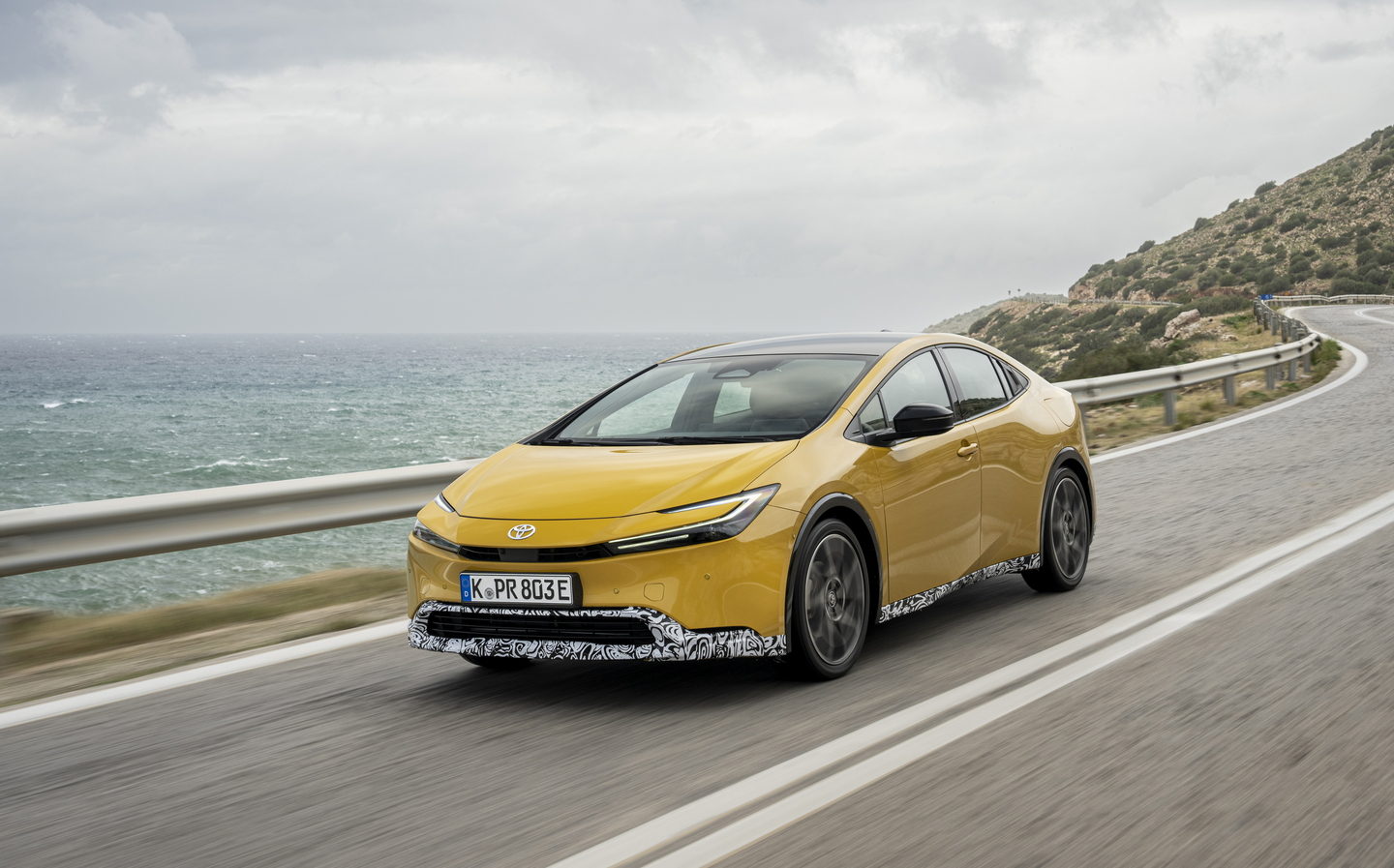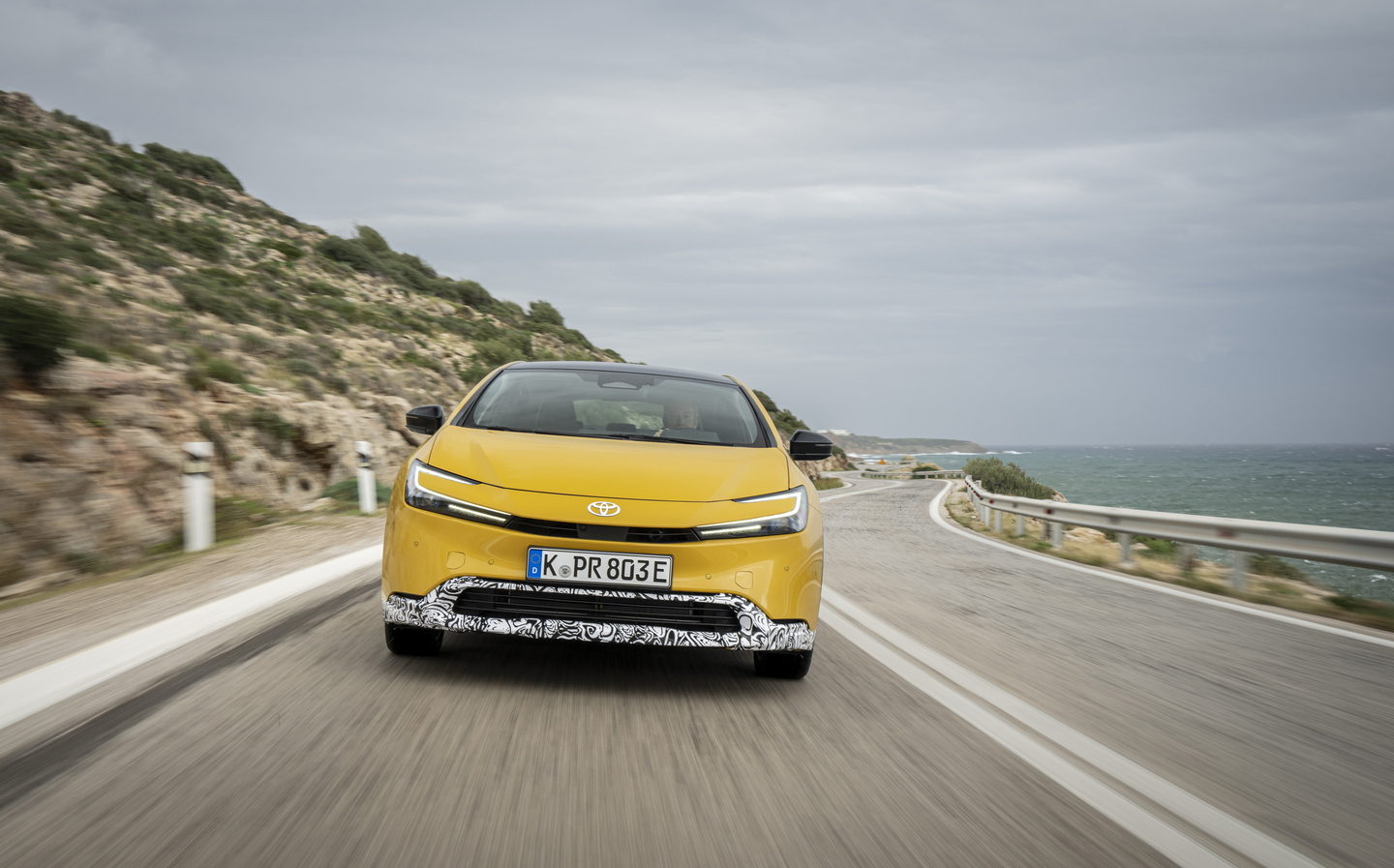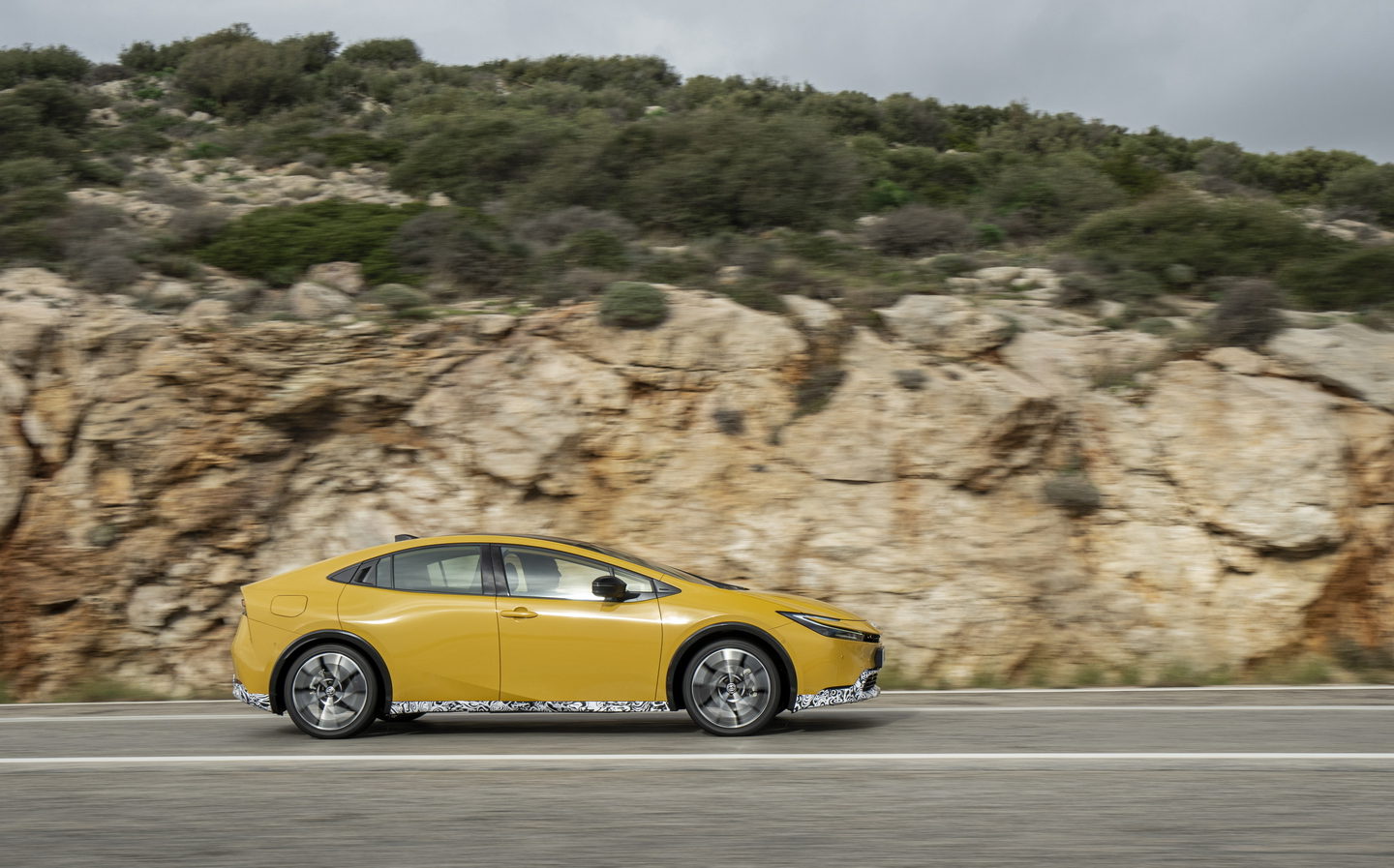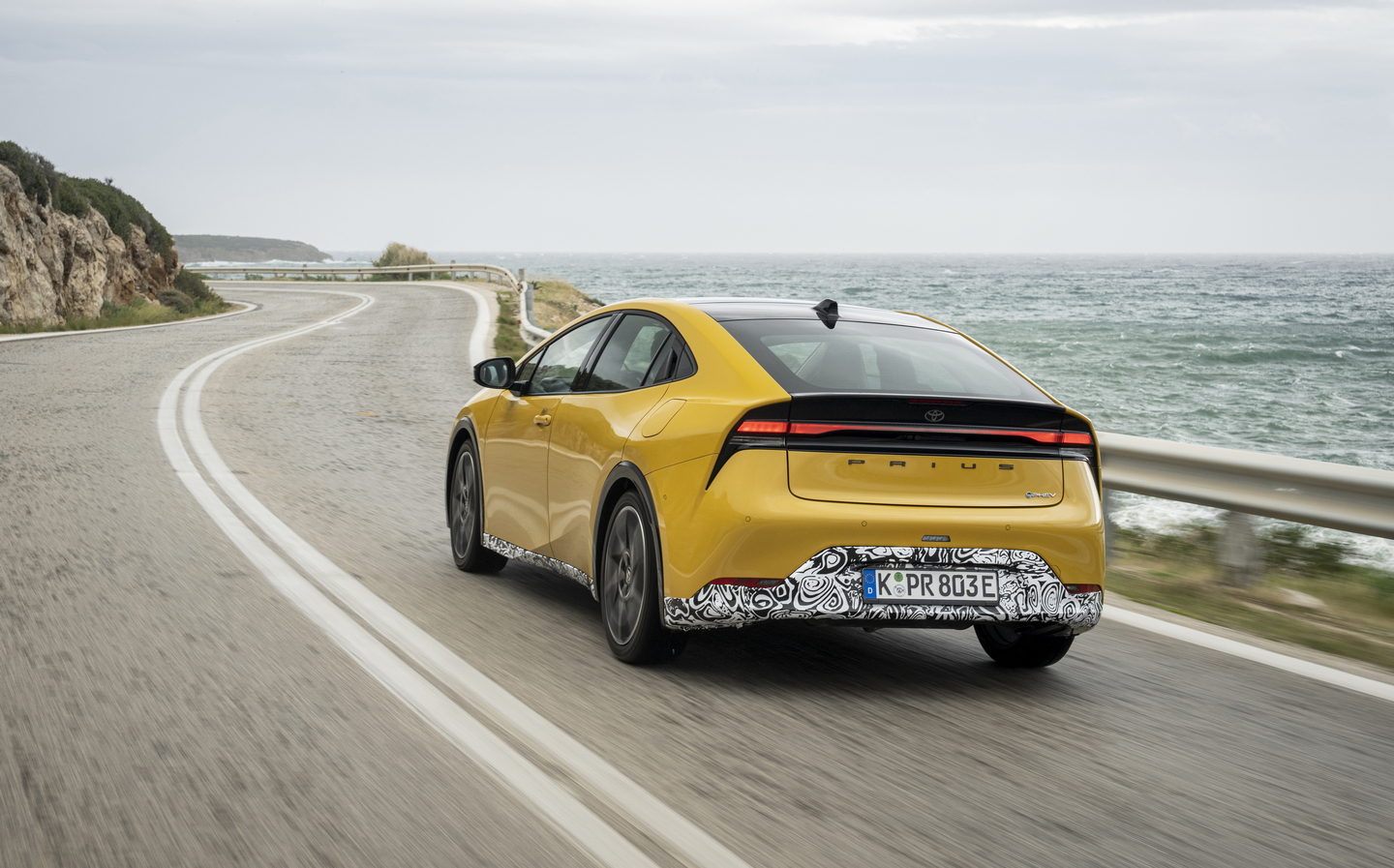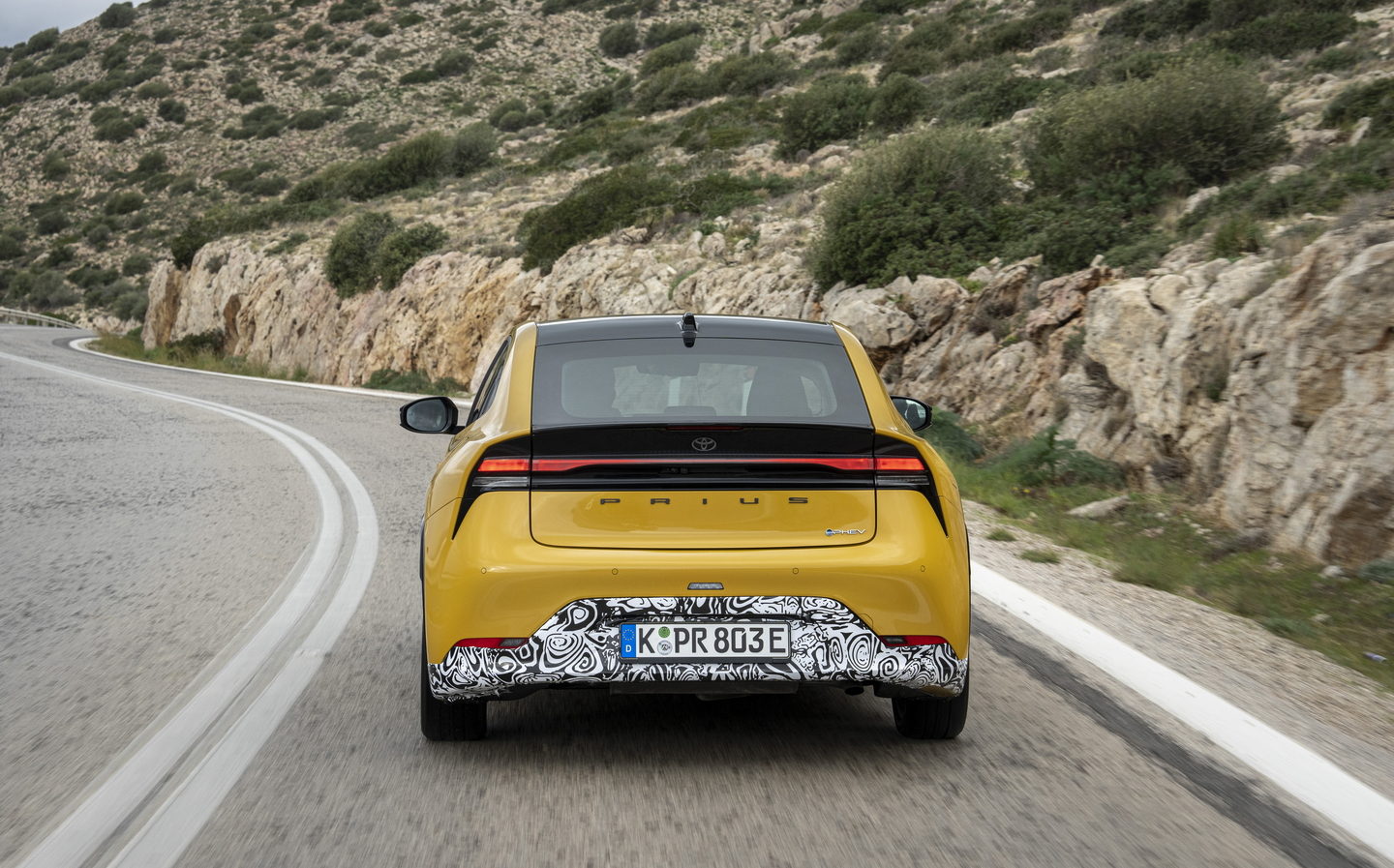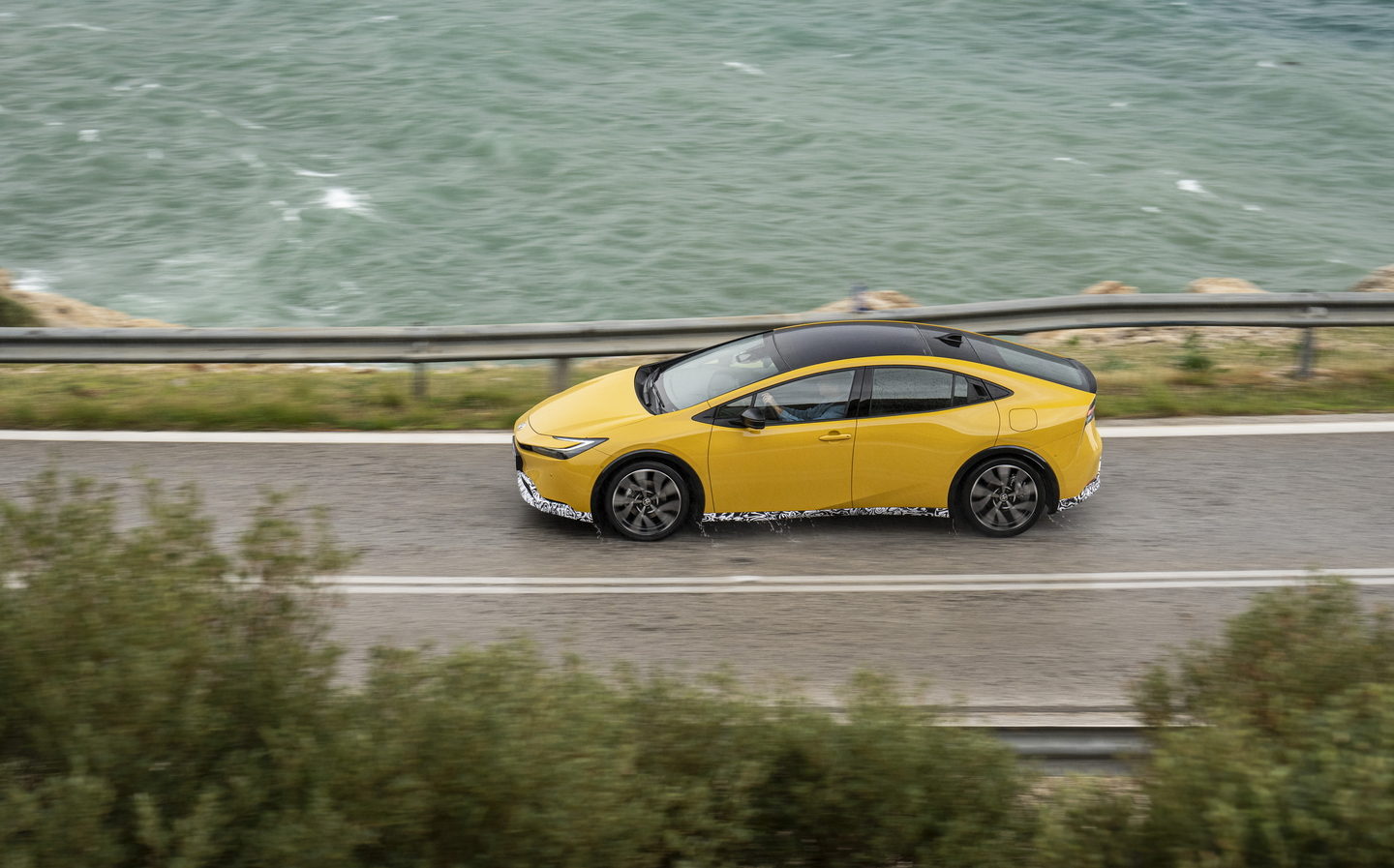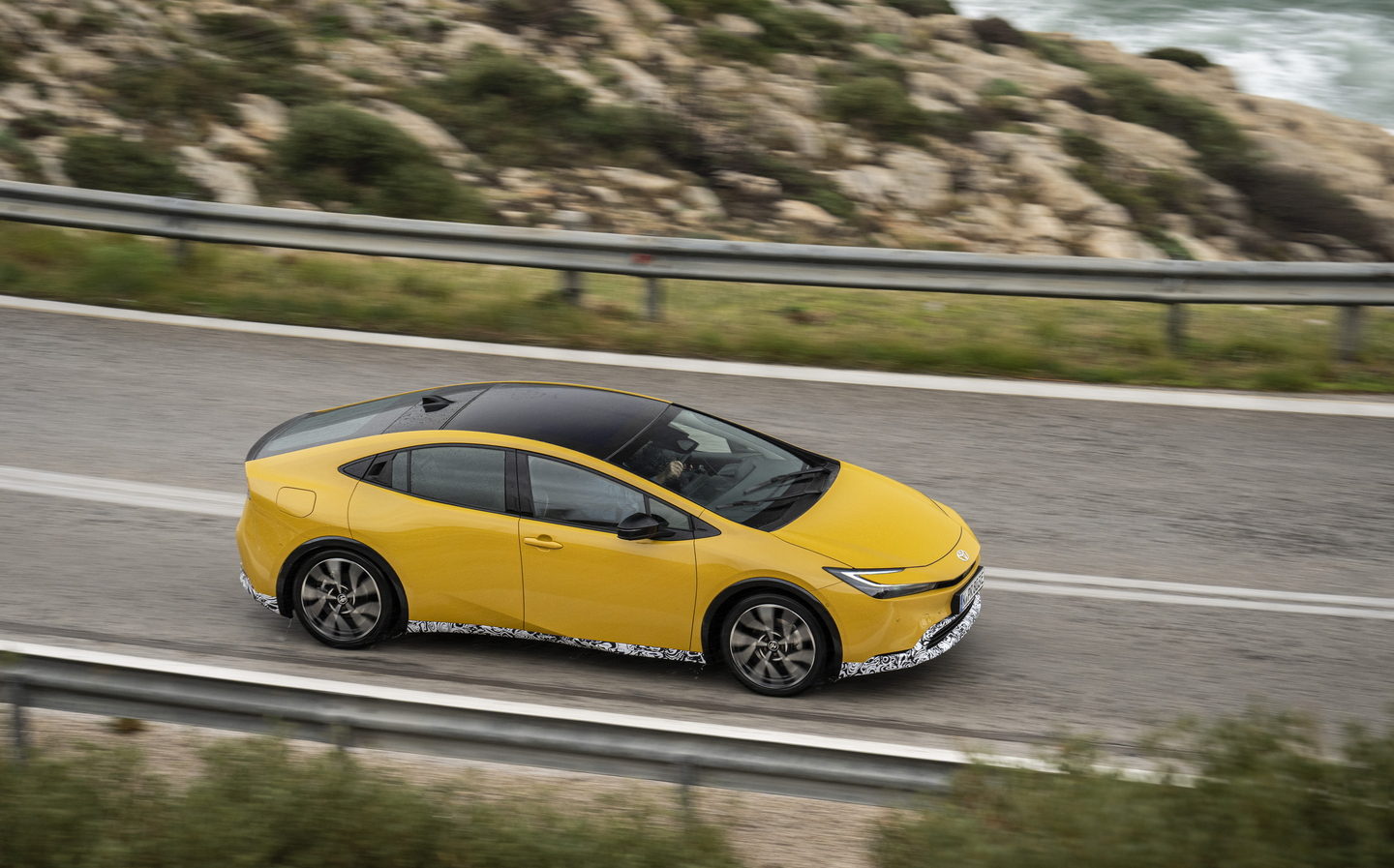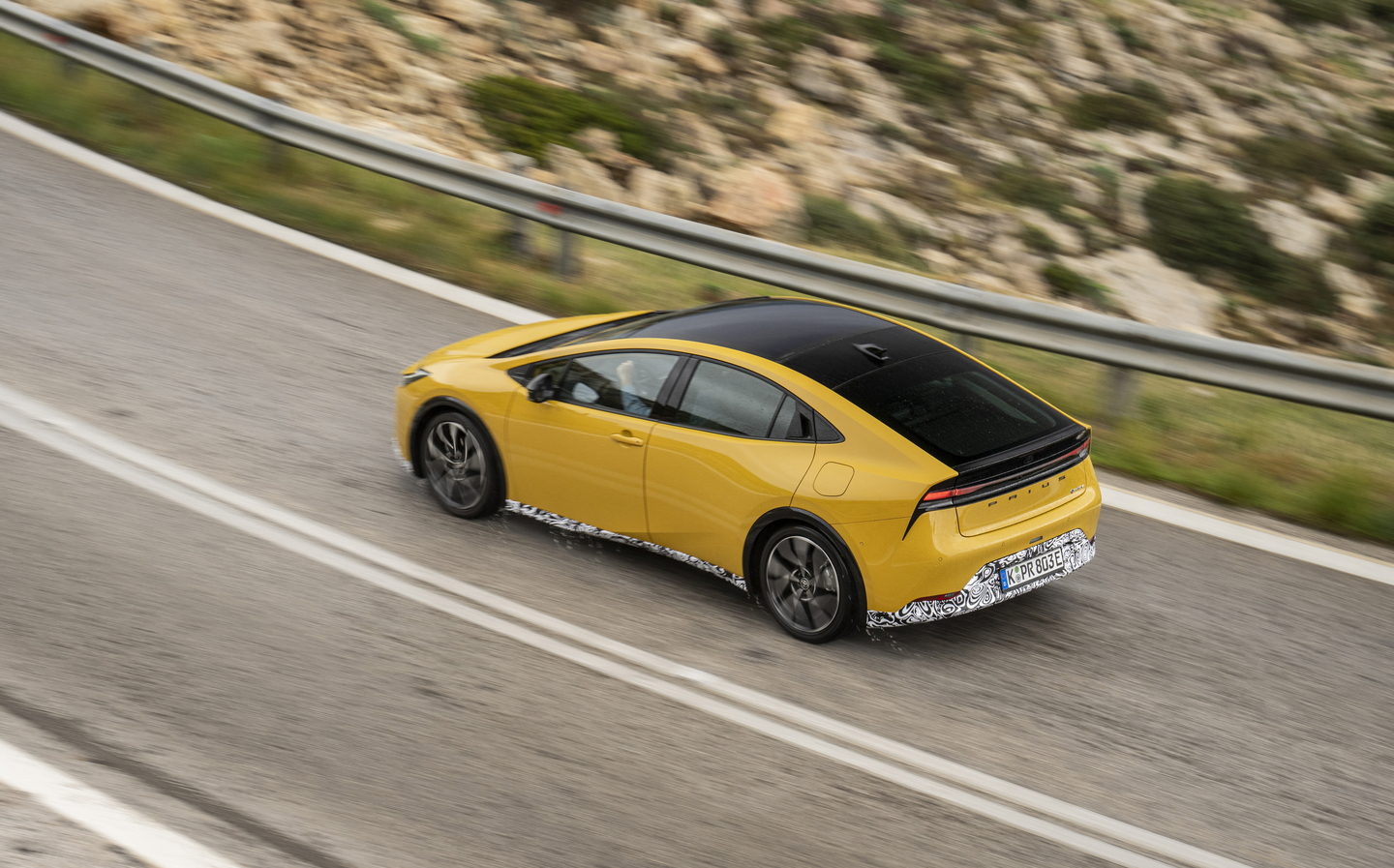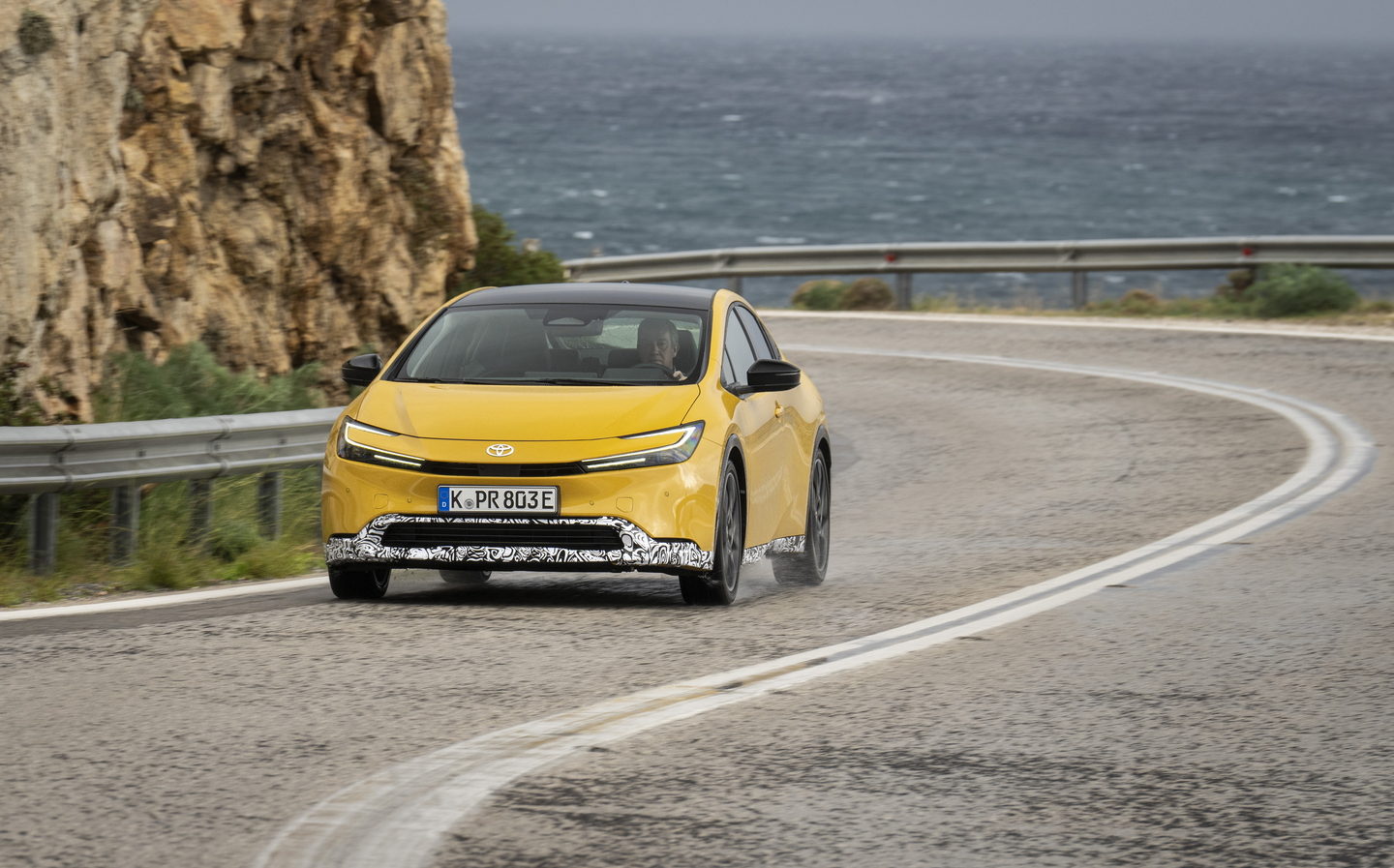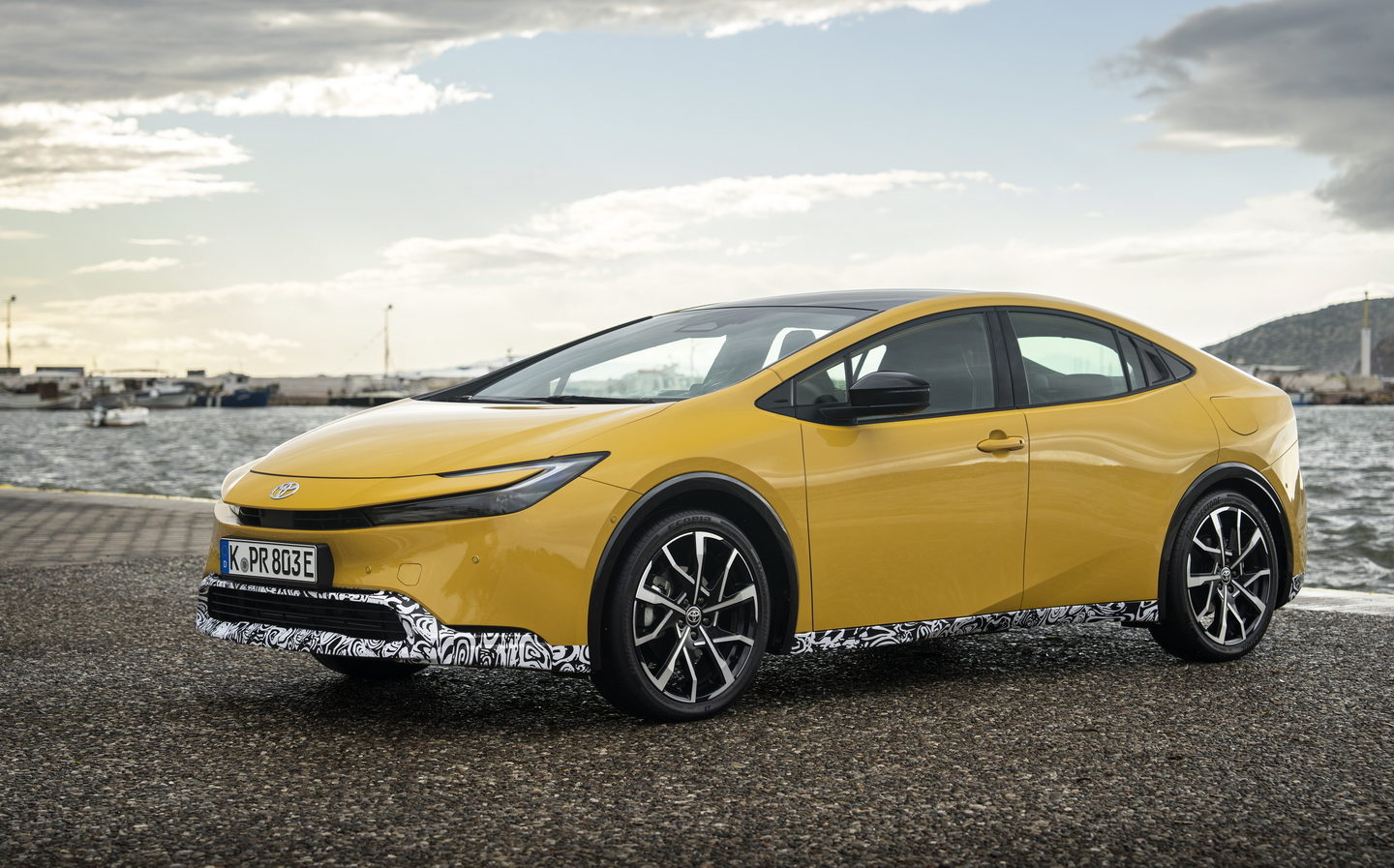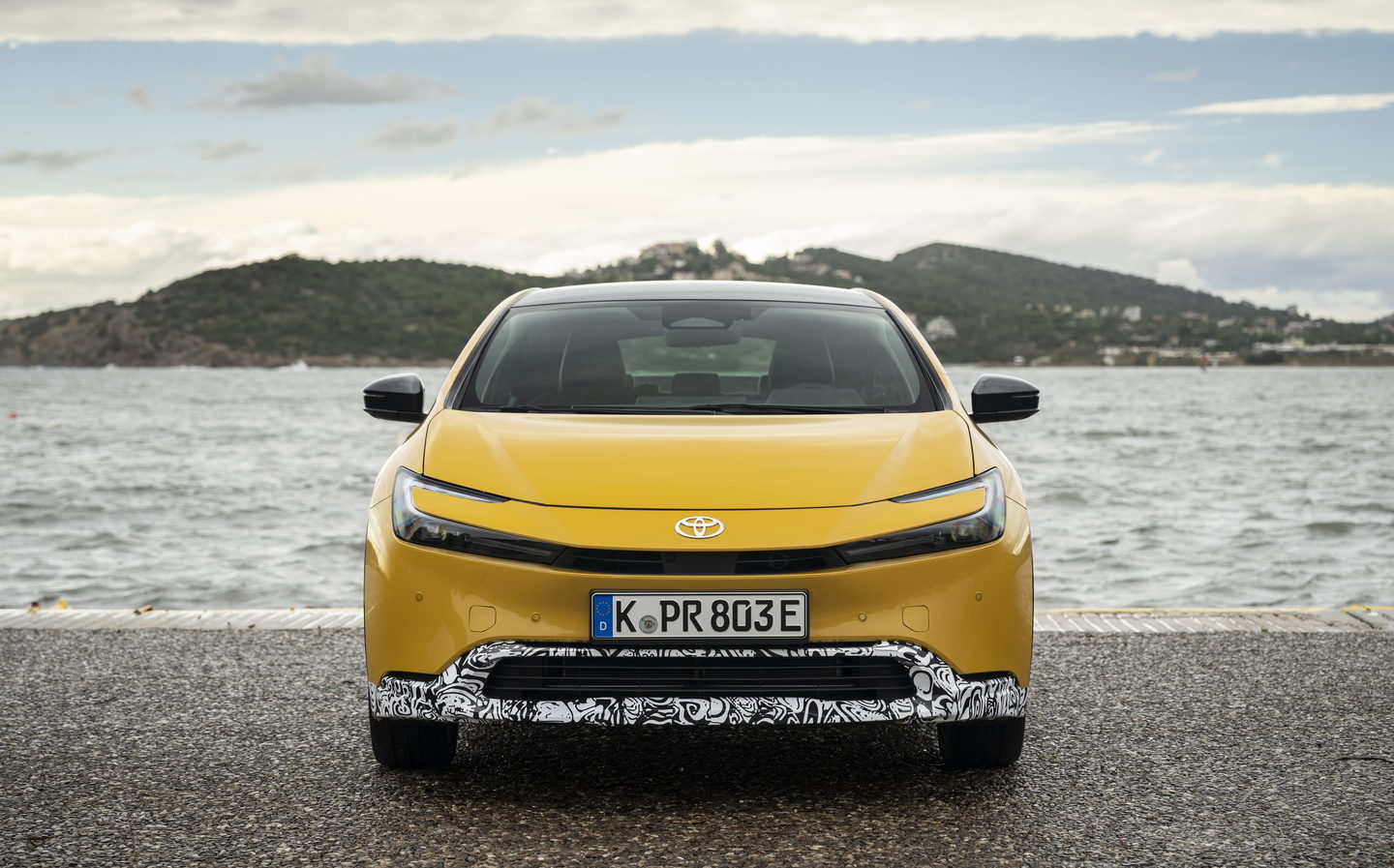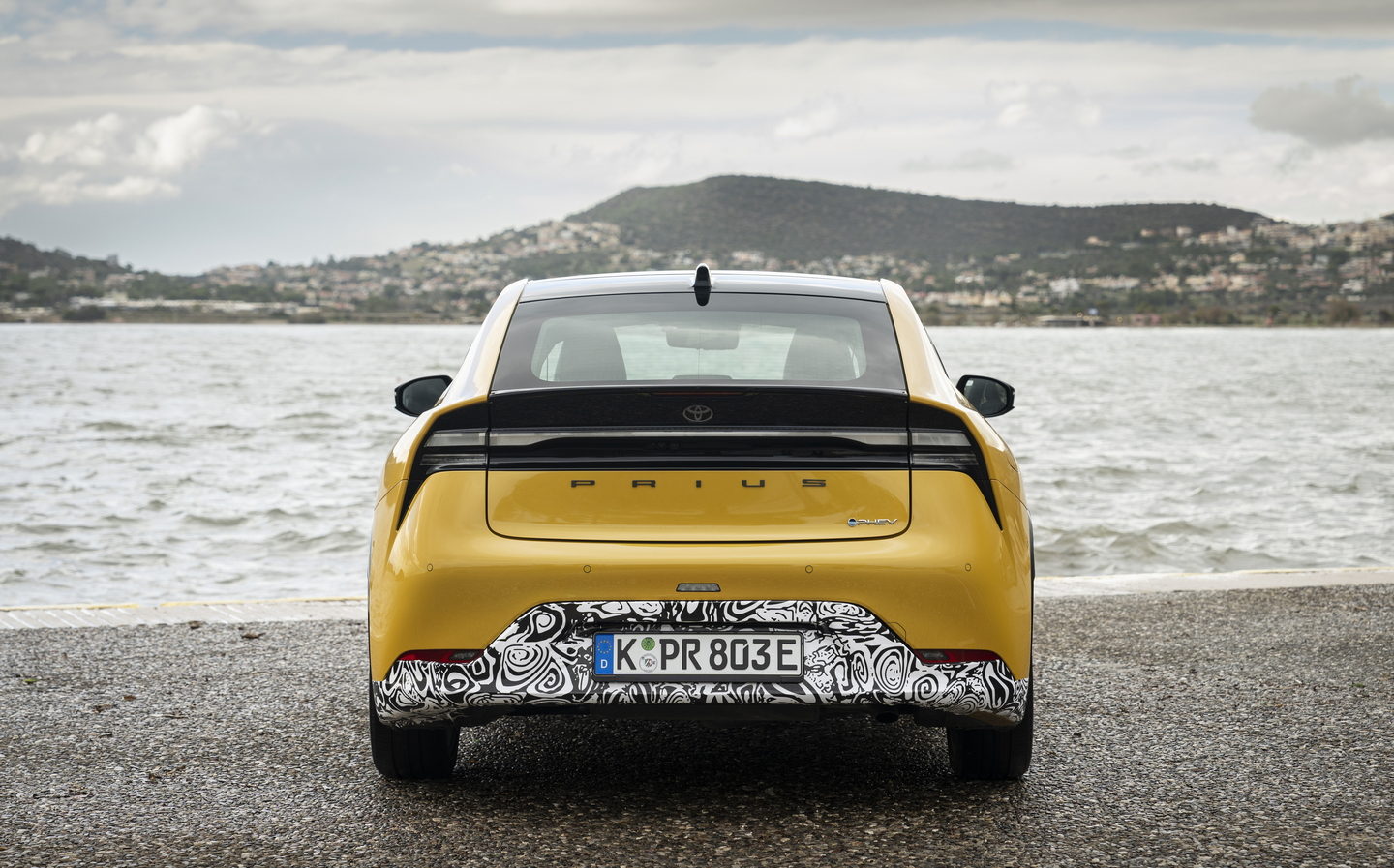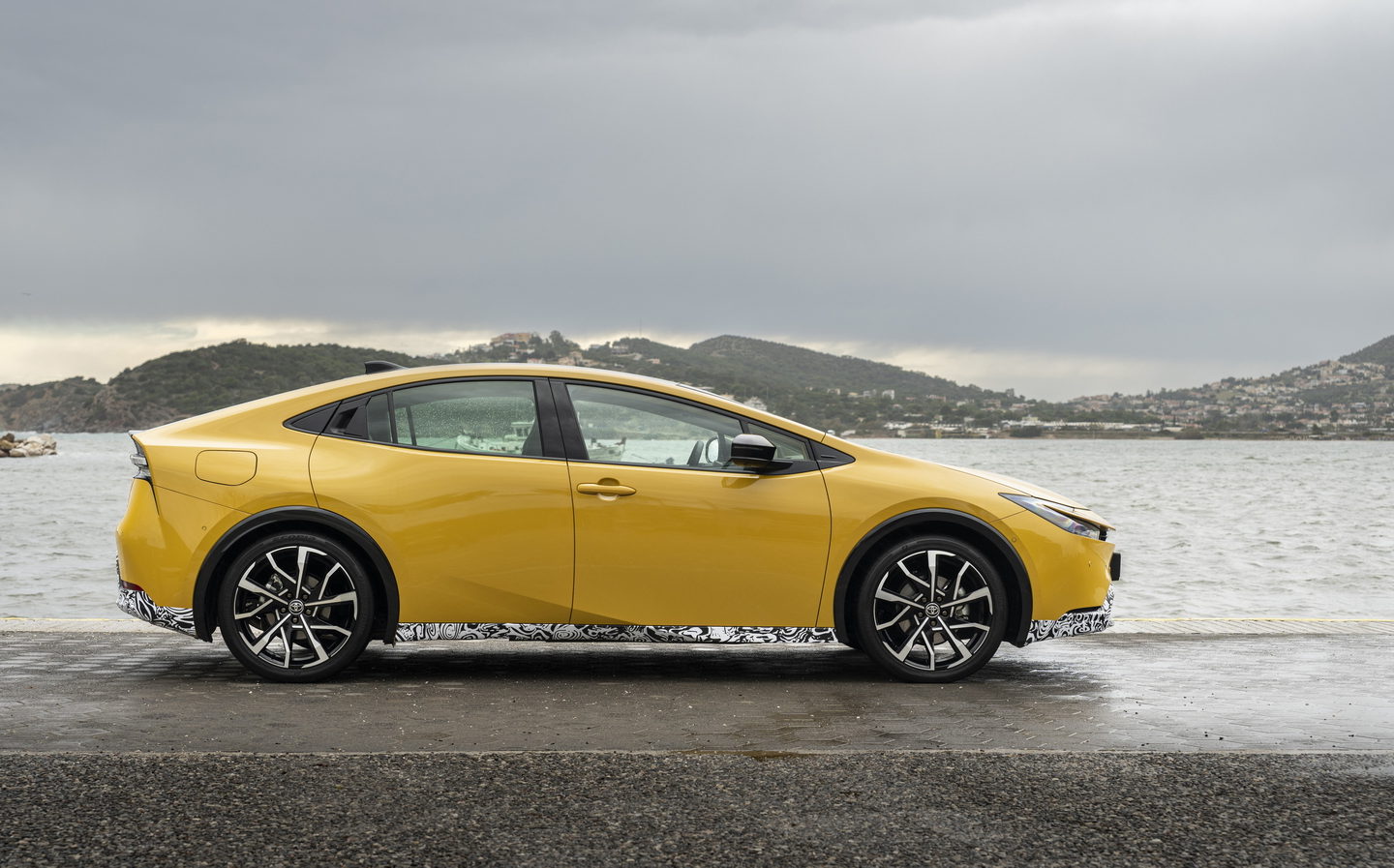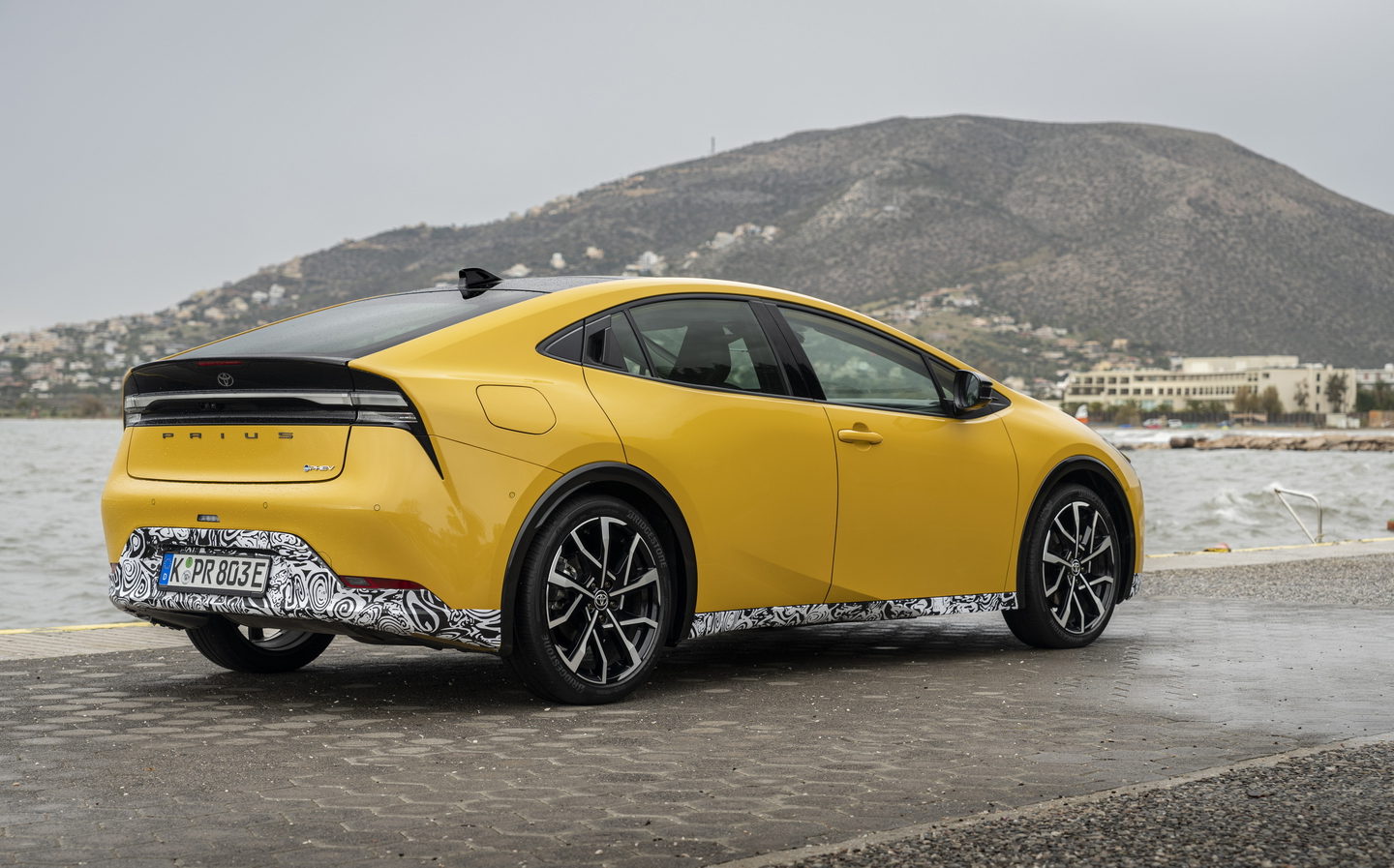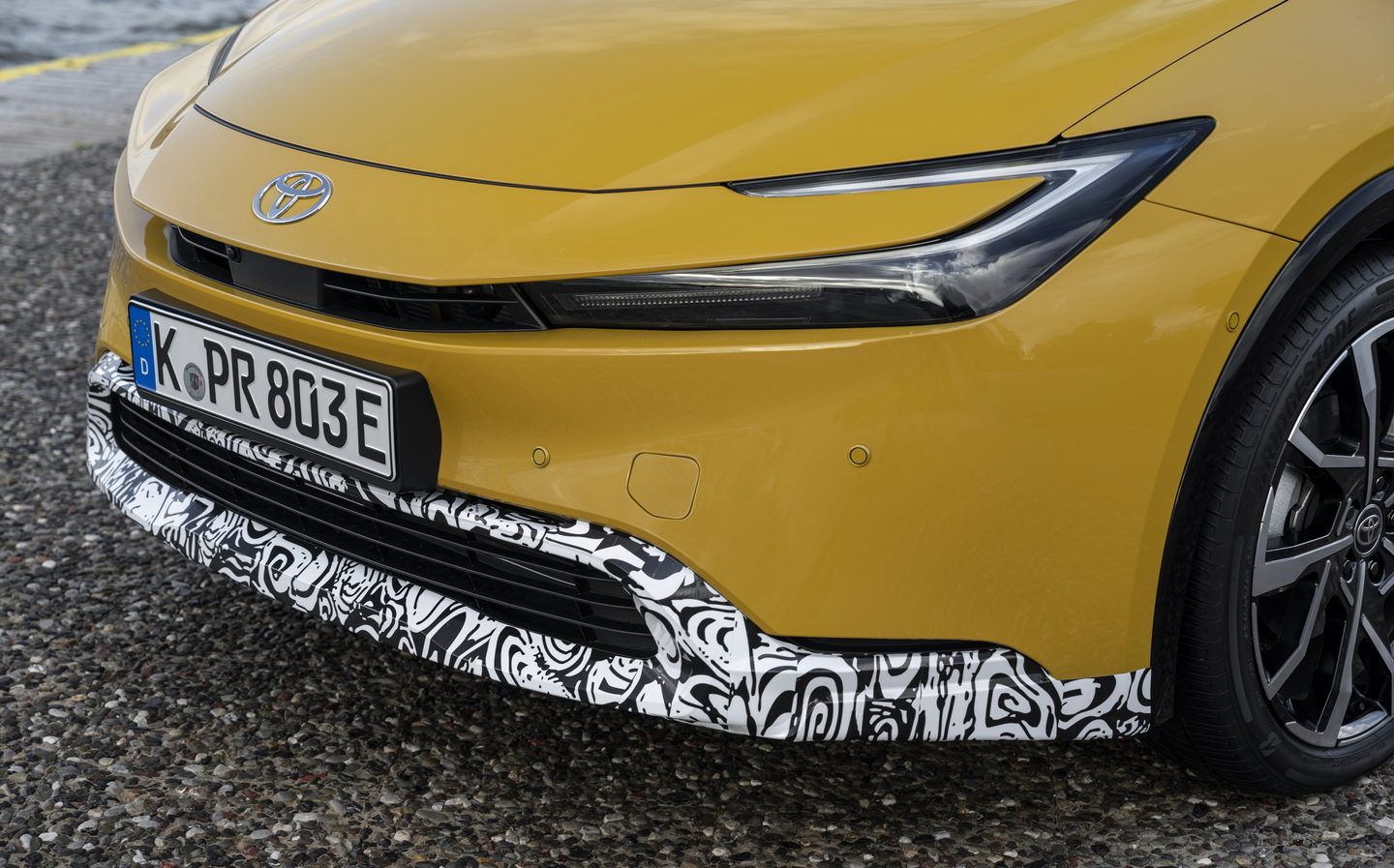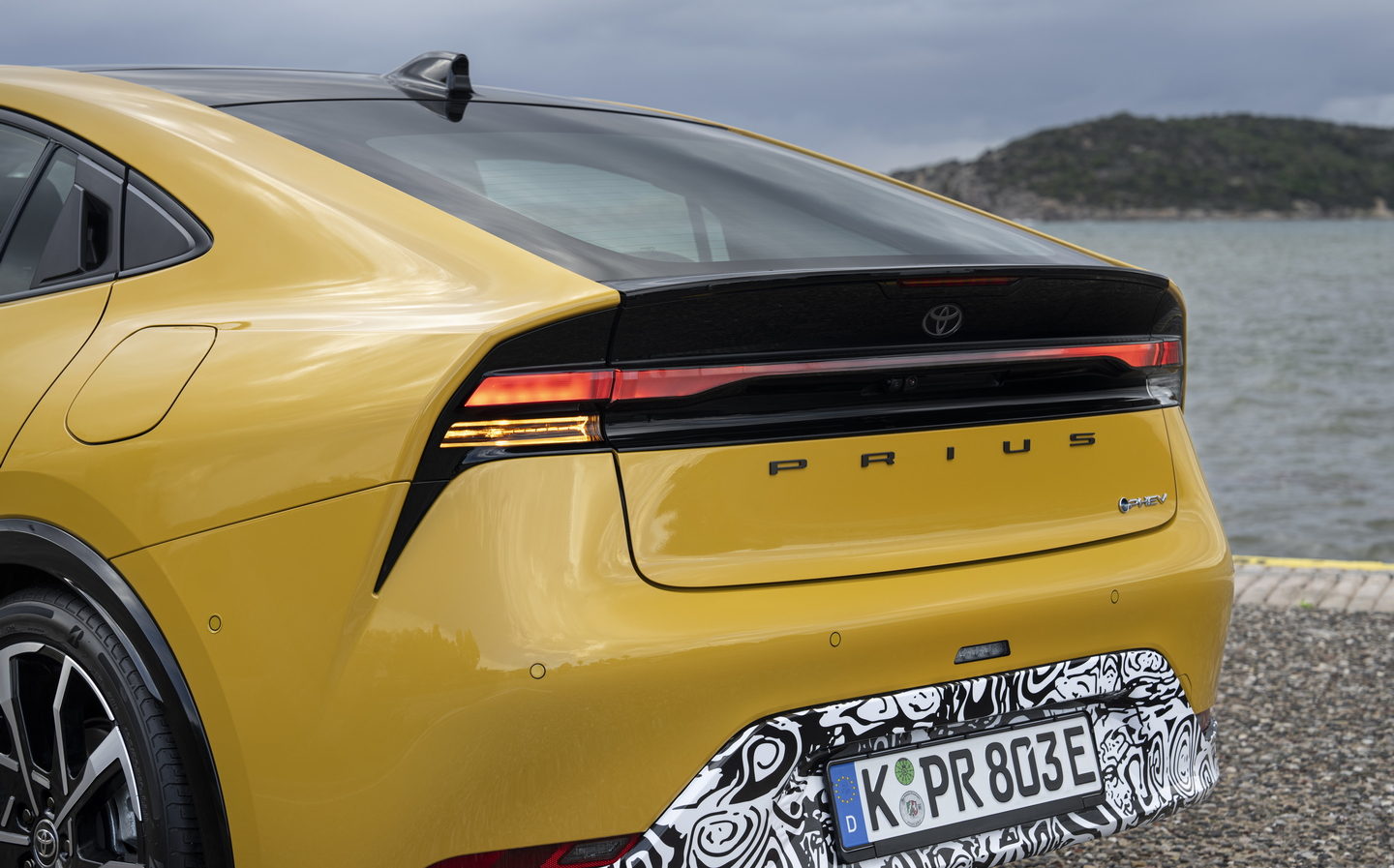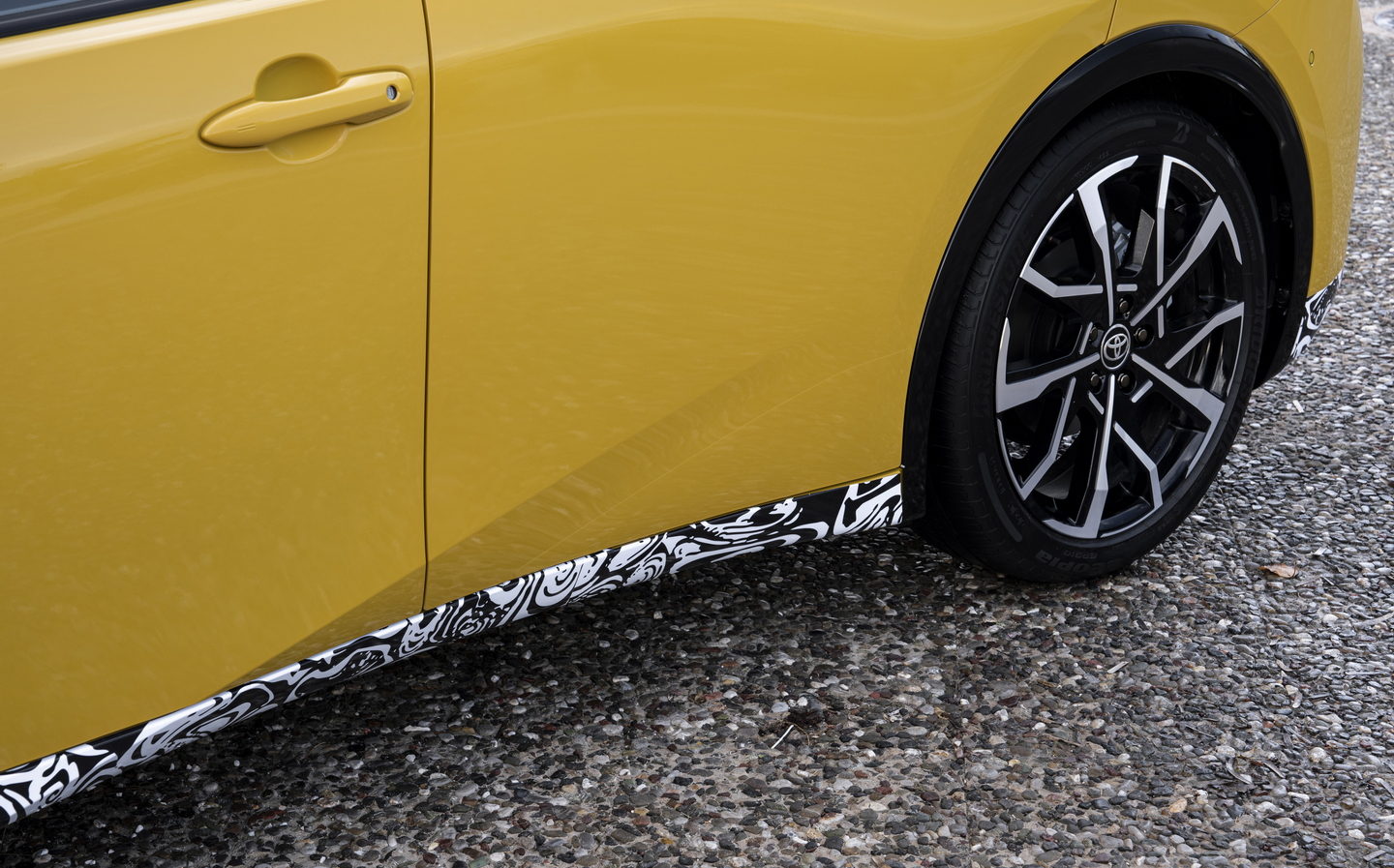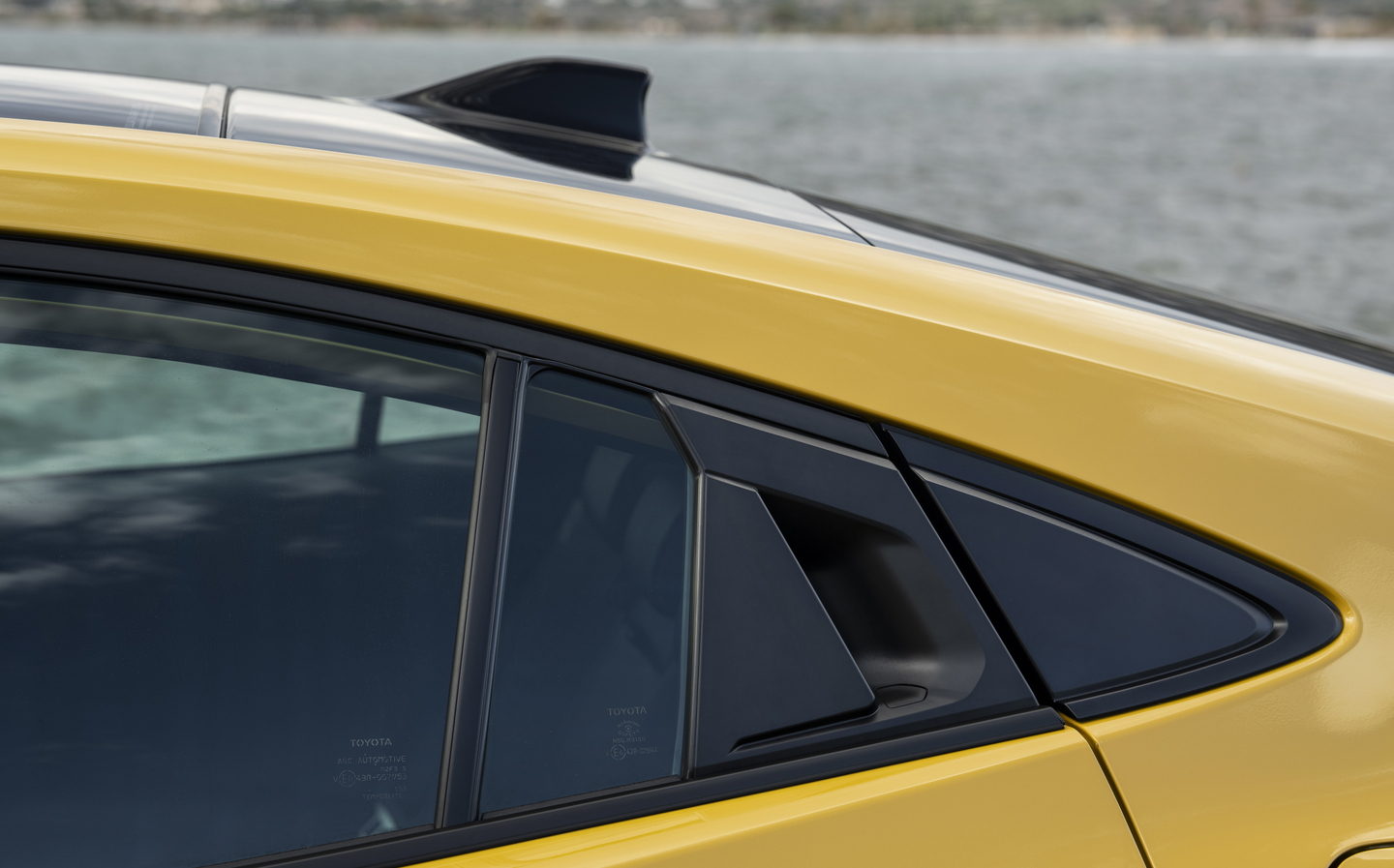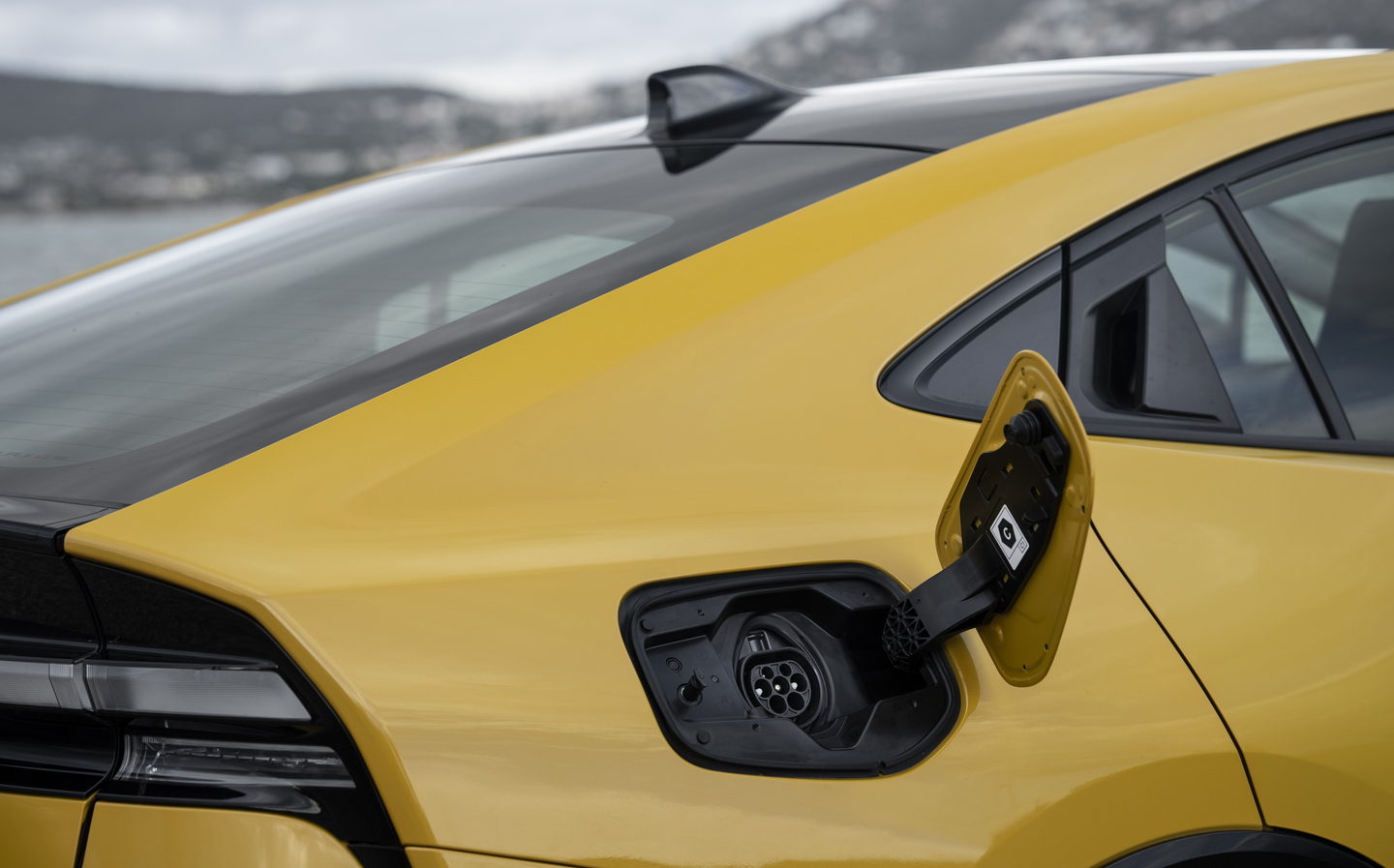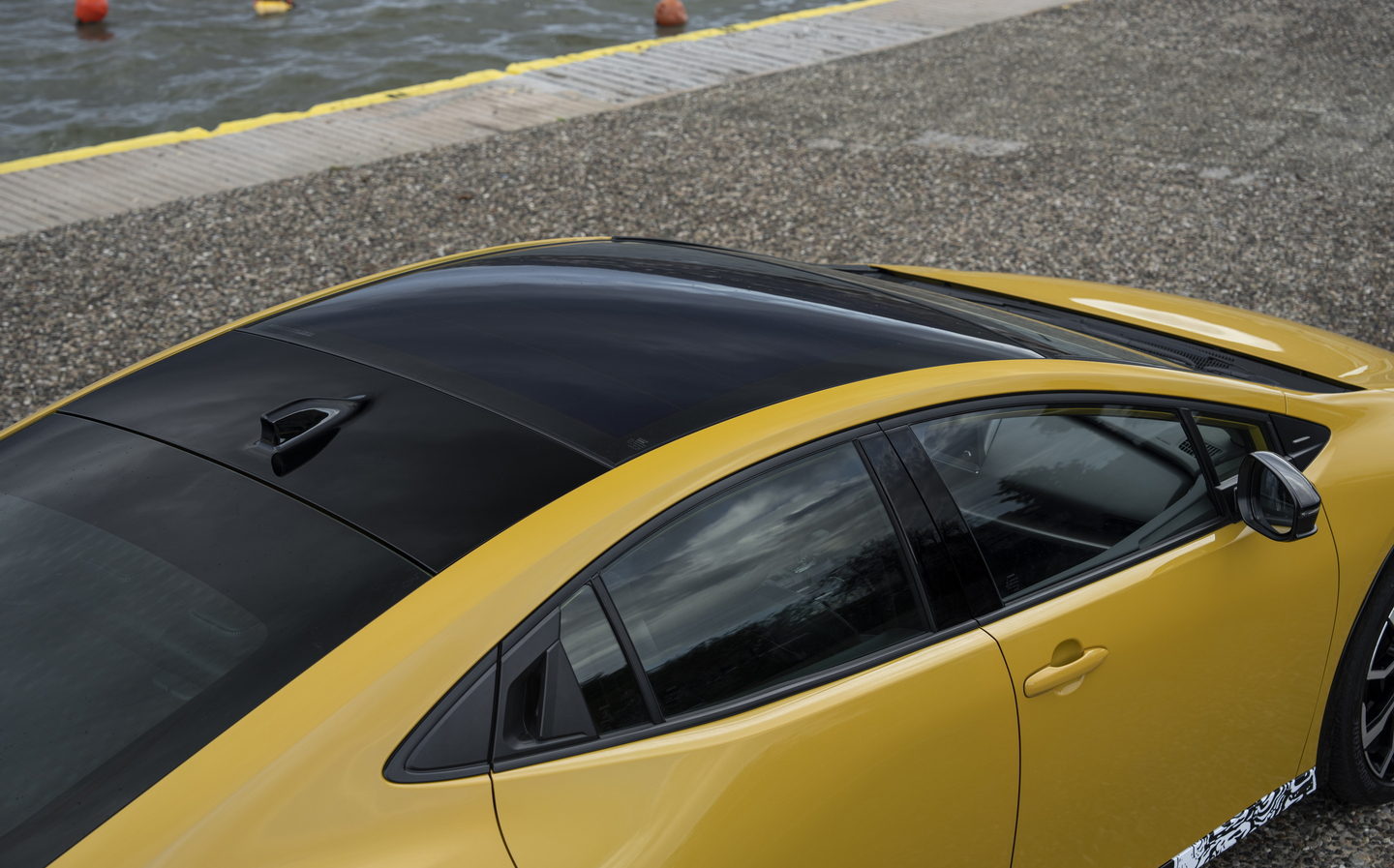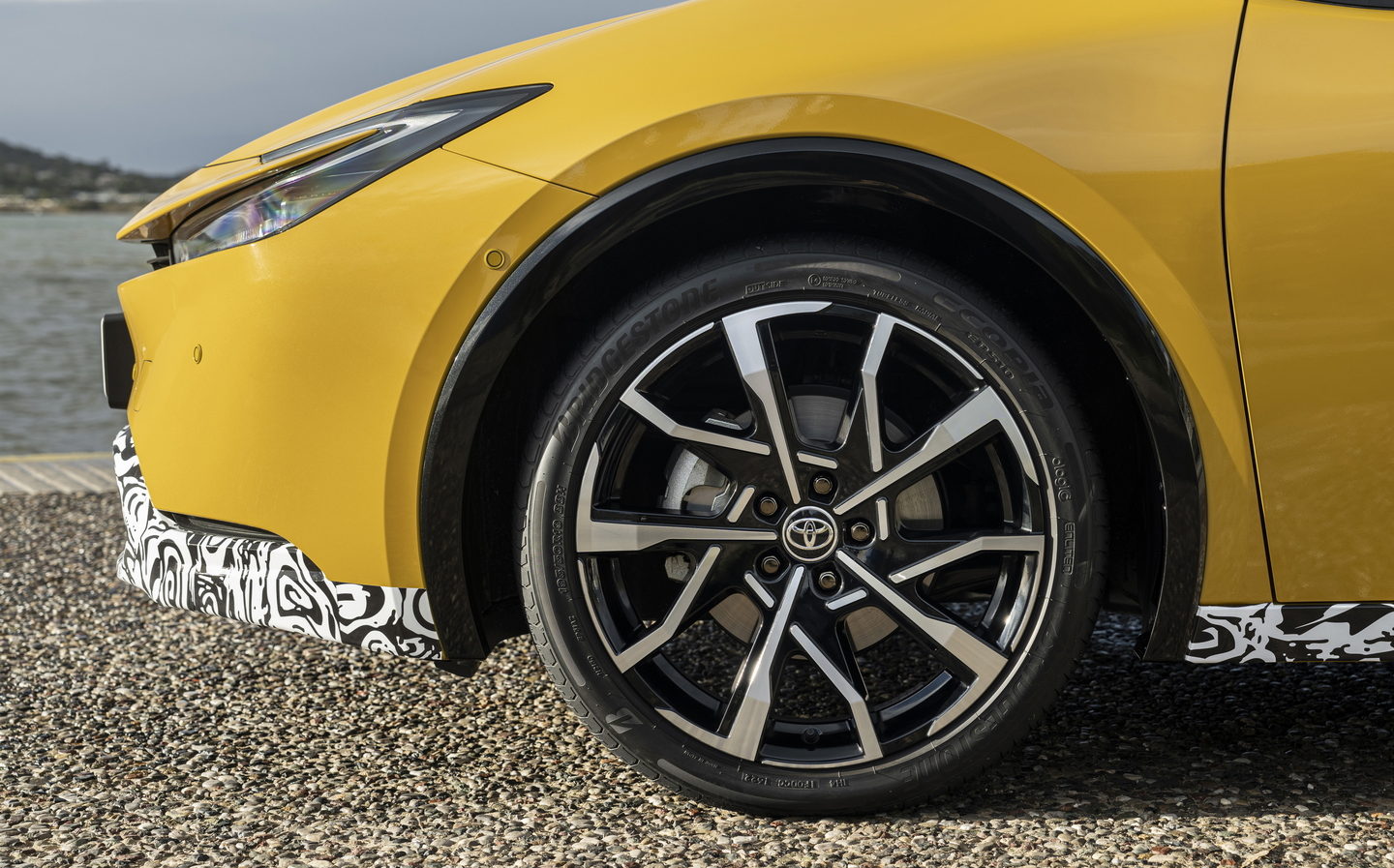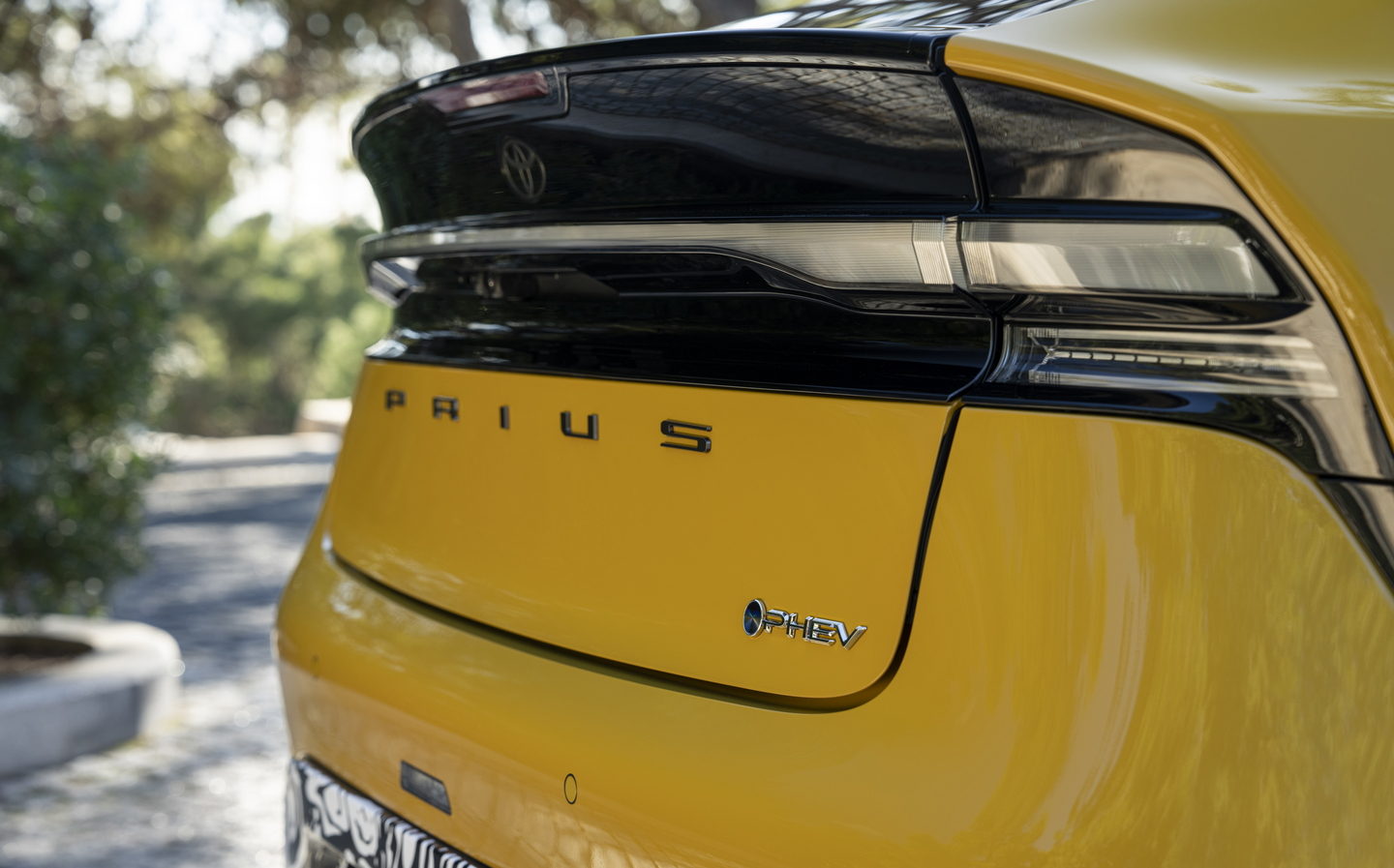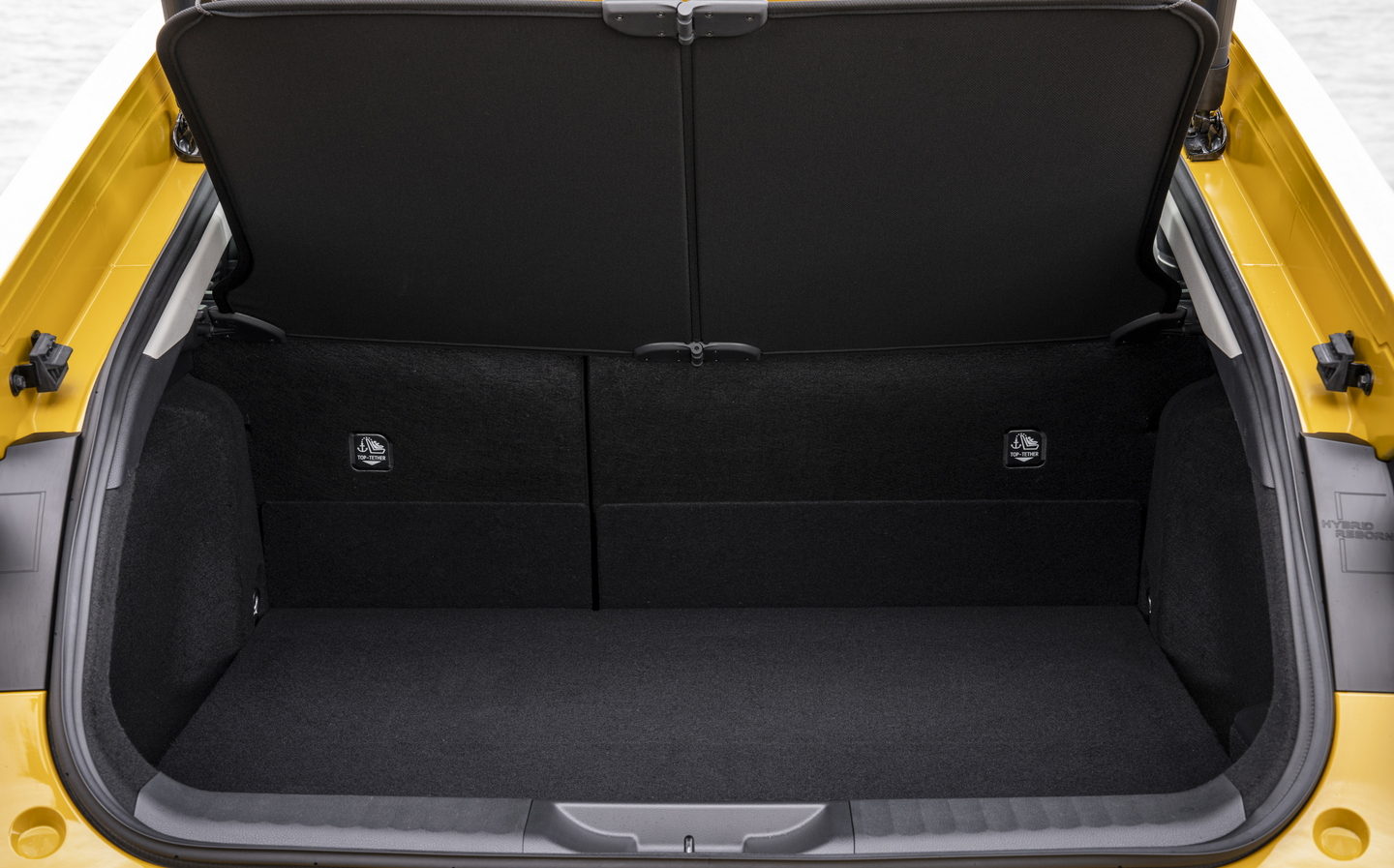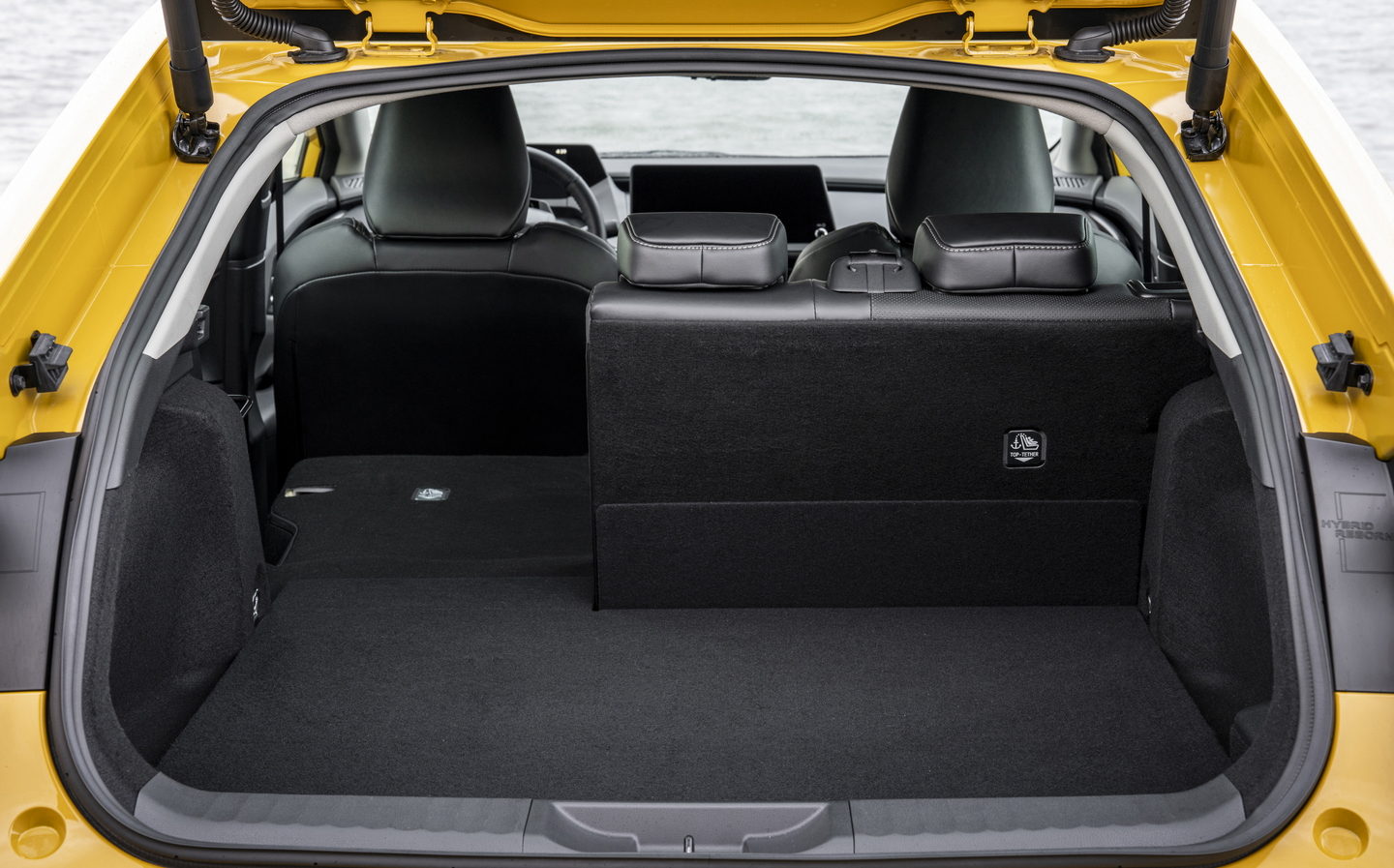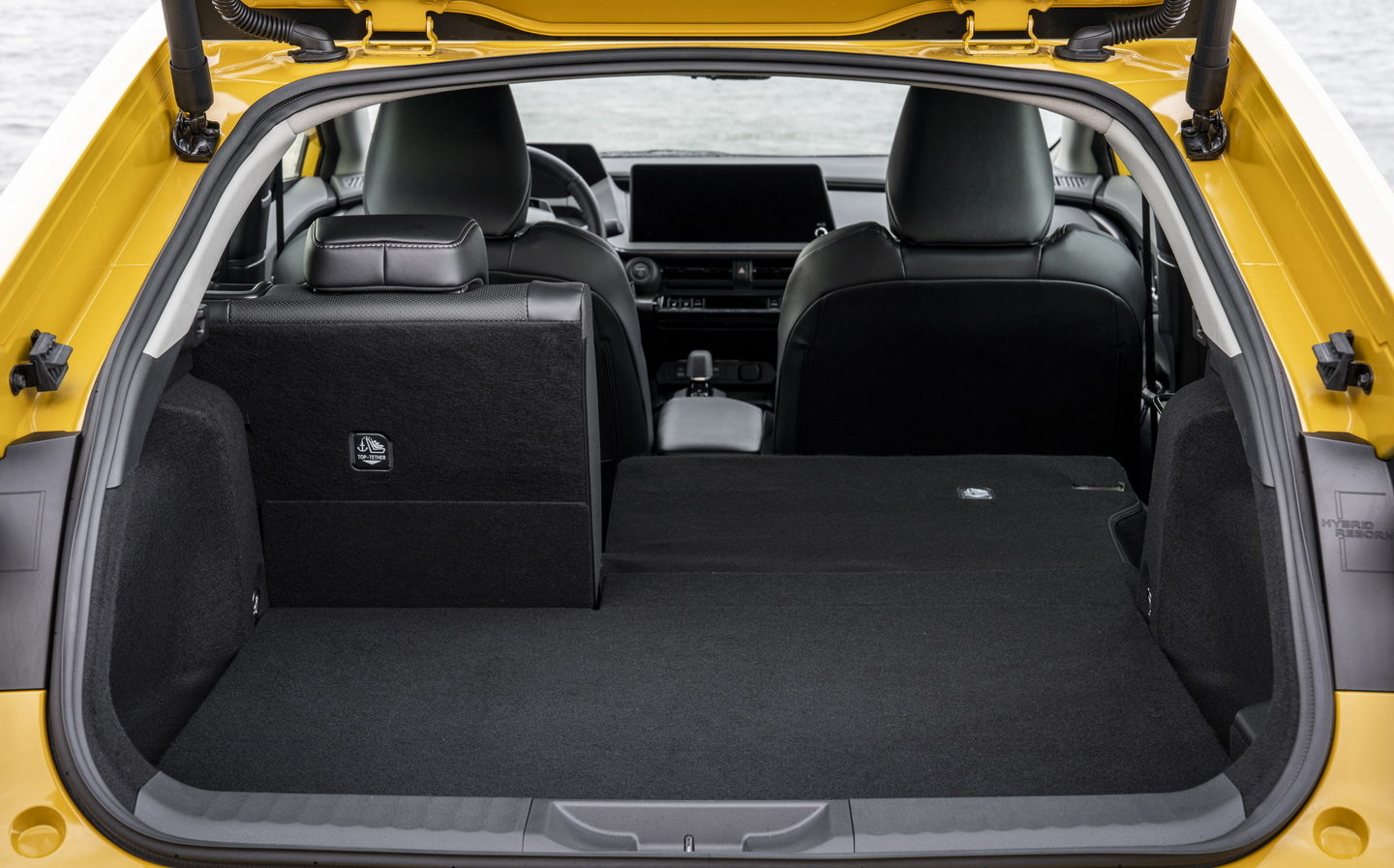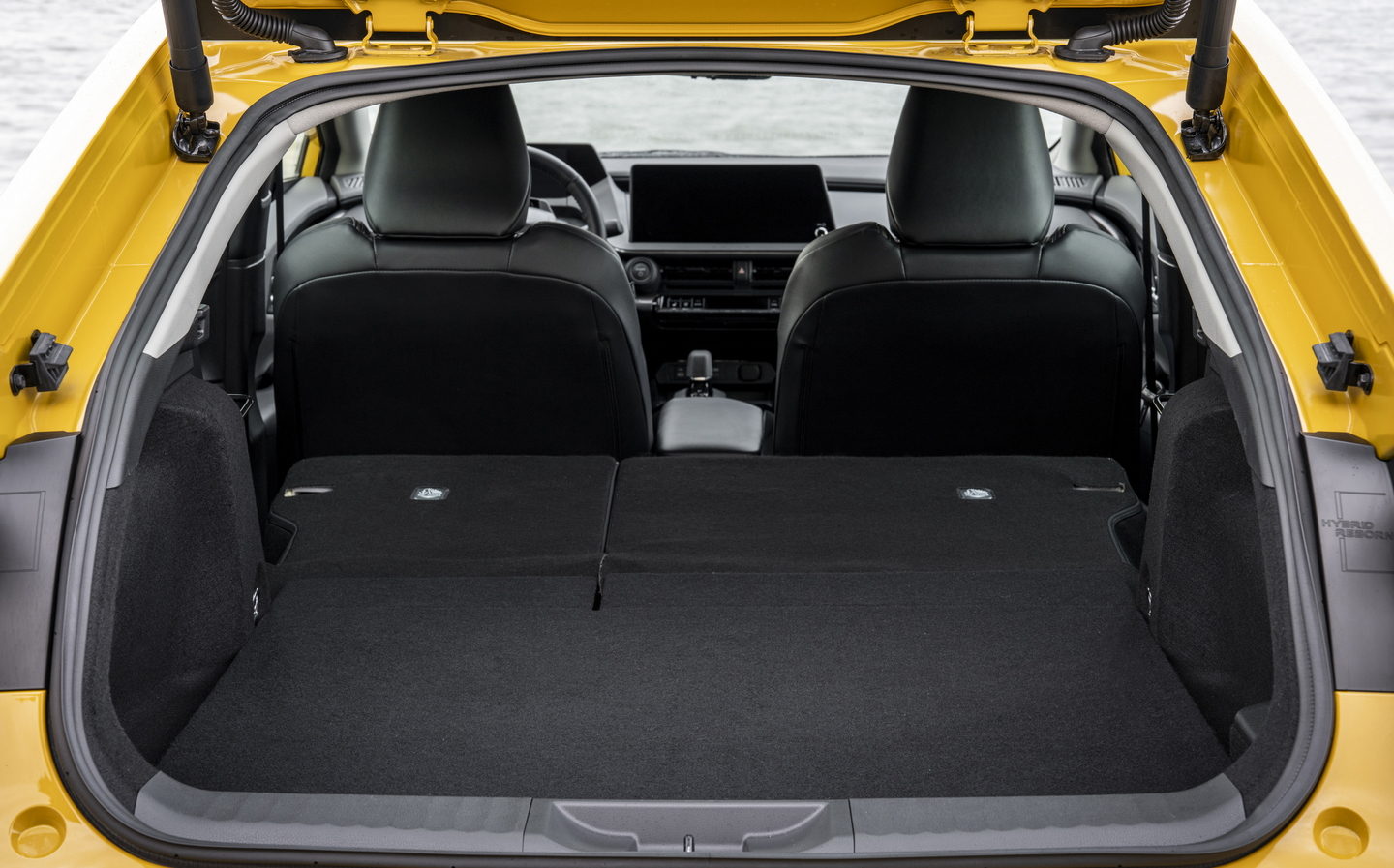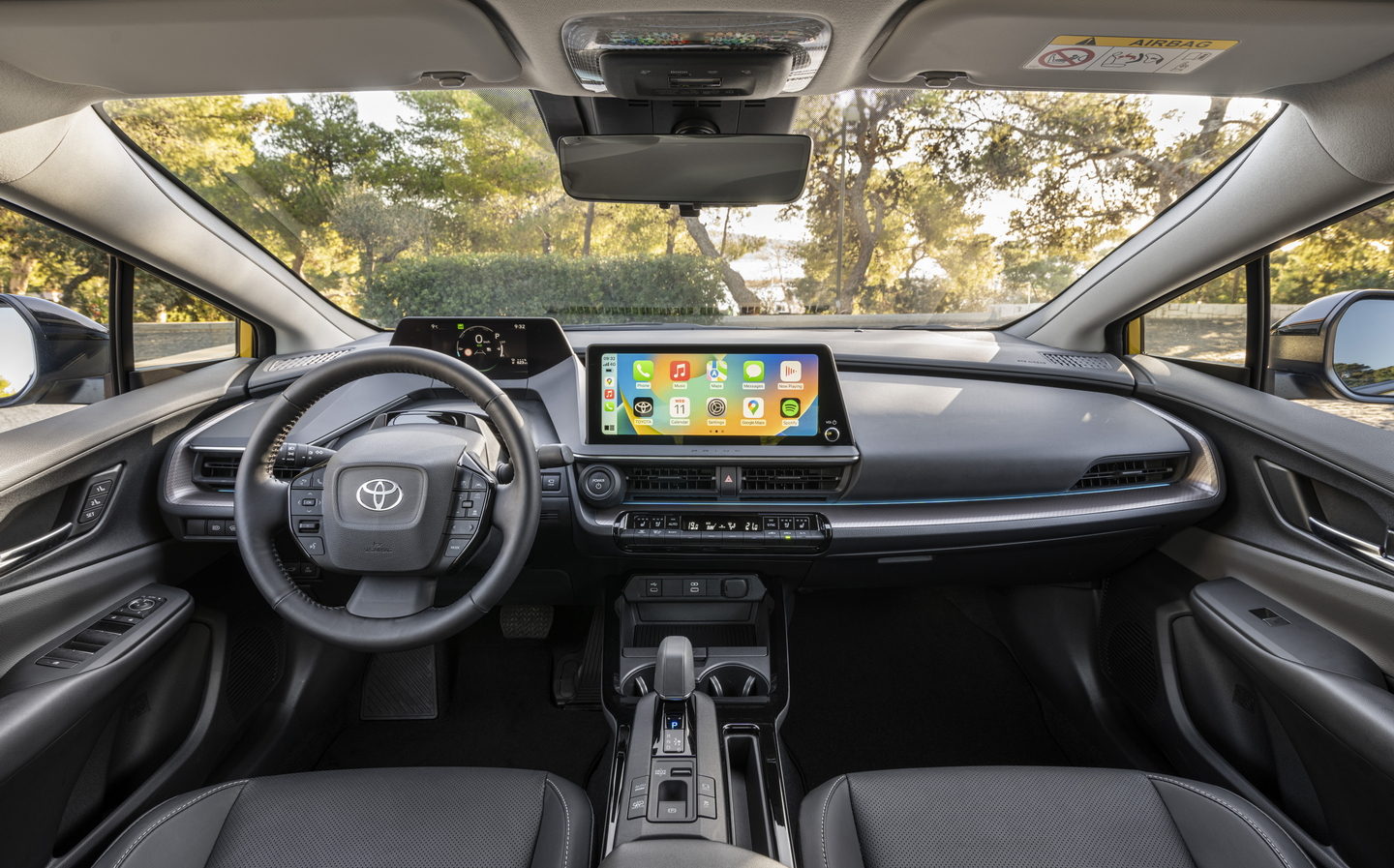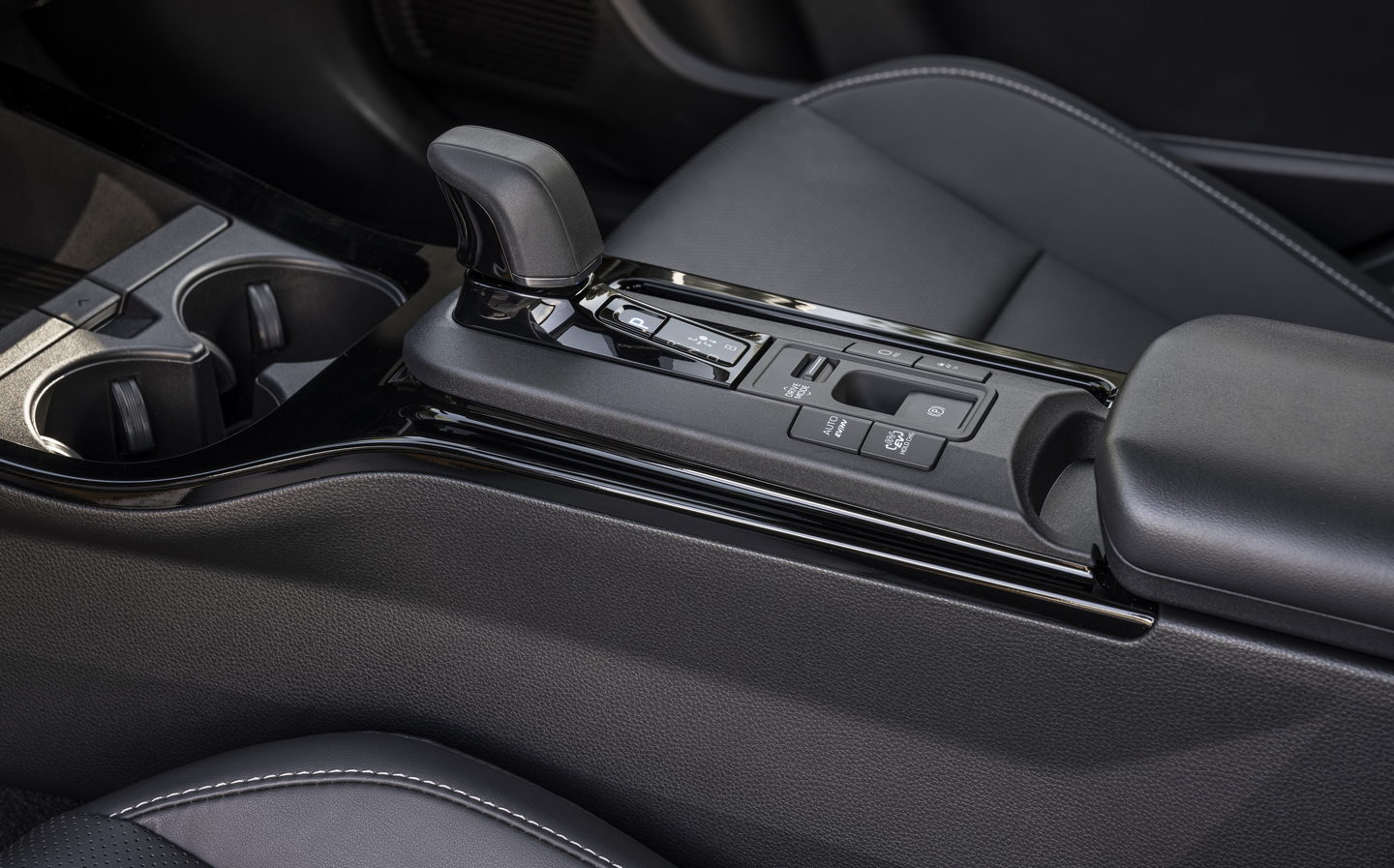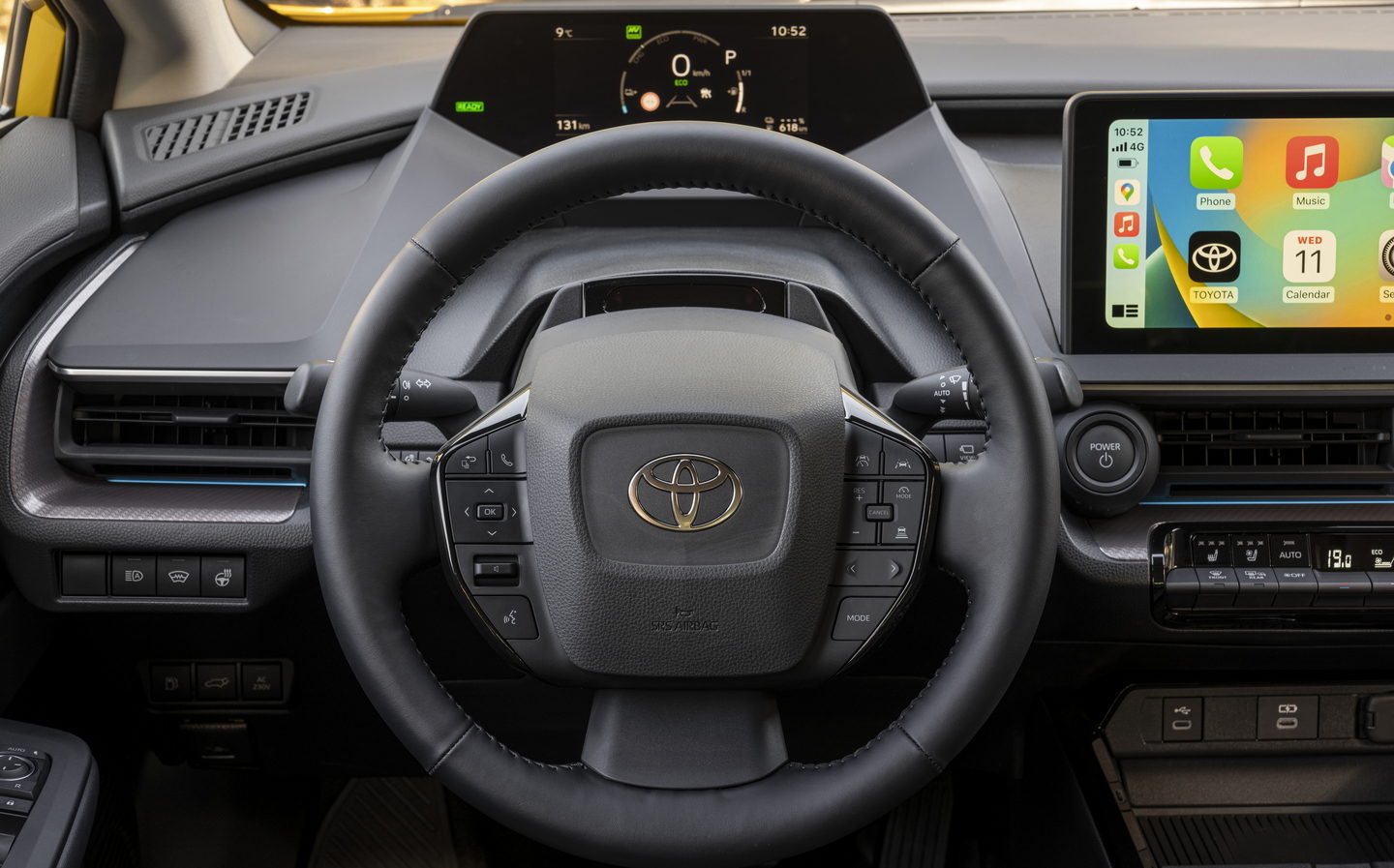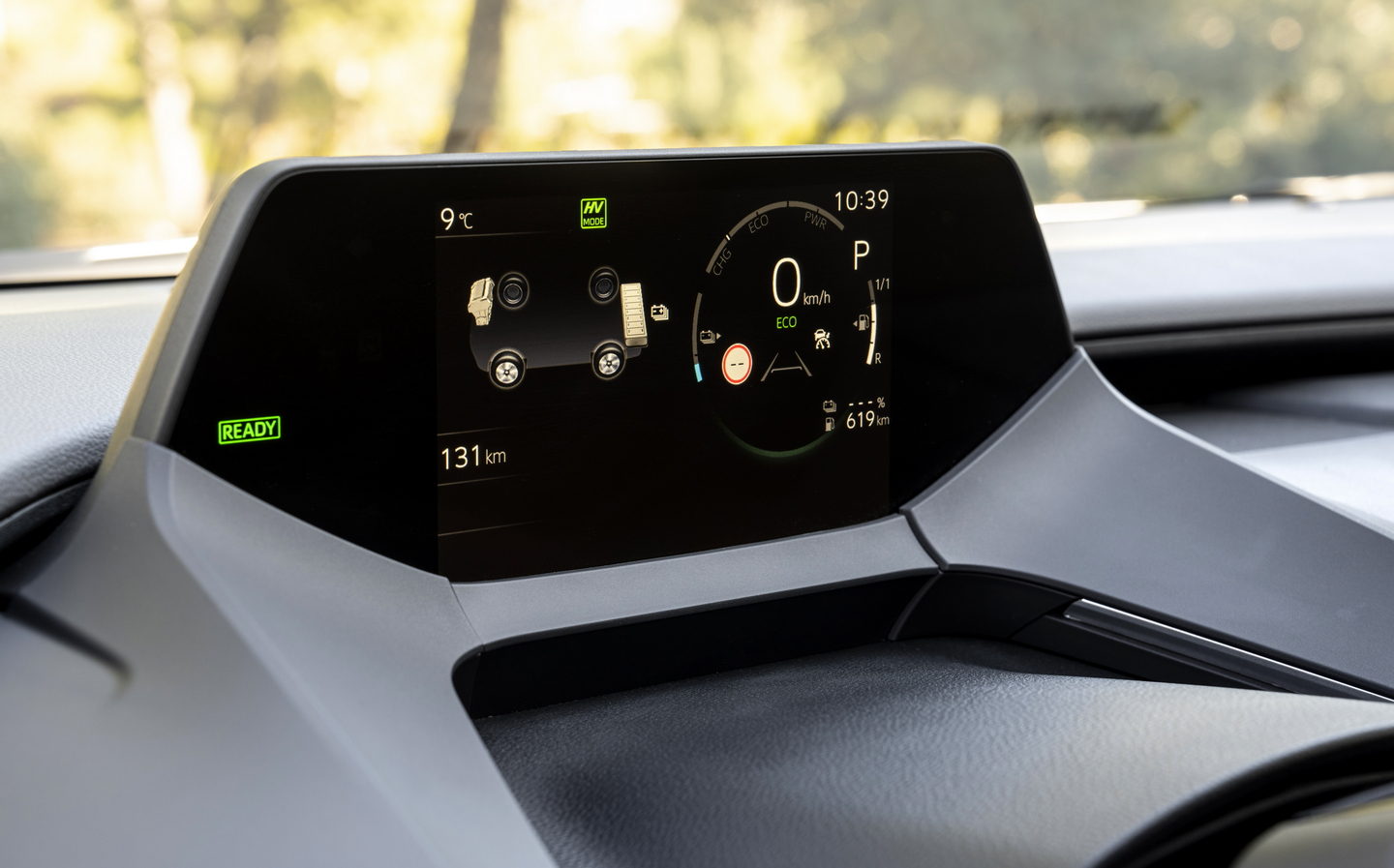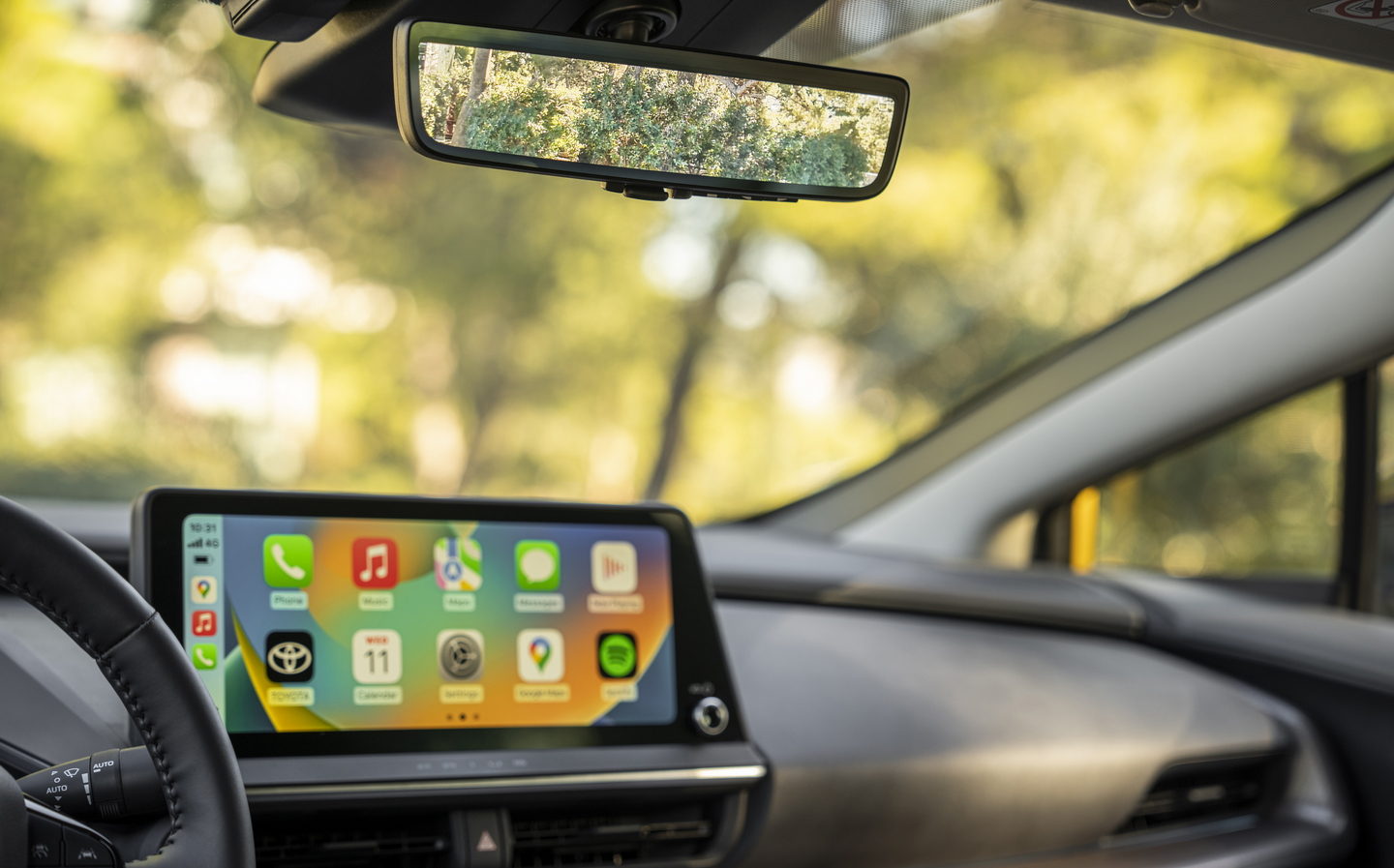Toyota Prius Plug-in Hybrid 2023 review: Eco-car goes stylish and fast – but denied to British buyers
Hold the NYC taxi jibes
You’re not alone in thinking of the Toyota Prius first and foremost as a taxi. At the launch of the latest edition of the hybrid ecocar, Toyota itself admitted that there was much internal discussion about the direction its fifth-generation model should take, and the initial favoured route was to relaunch the car as one designed to be a public service vehicle.
Sataki Oya, deputy chief engineer for the Prius, told Driving.co.uk that he disagreed with this strategy and asked Toyota’s design department instead to come up with a new style for the car, one that was emotive and reason enough for the public to buy the car.
It’s clear who won the debate, as the style of the new Prius has been universally lauded, even if the concept is little different from before. And potentially there will be a lot of good-looking minicabs around over the coming years.
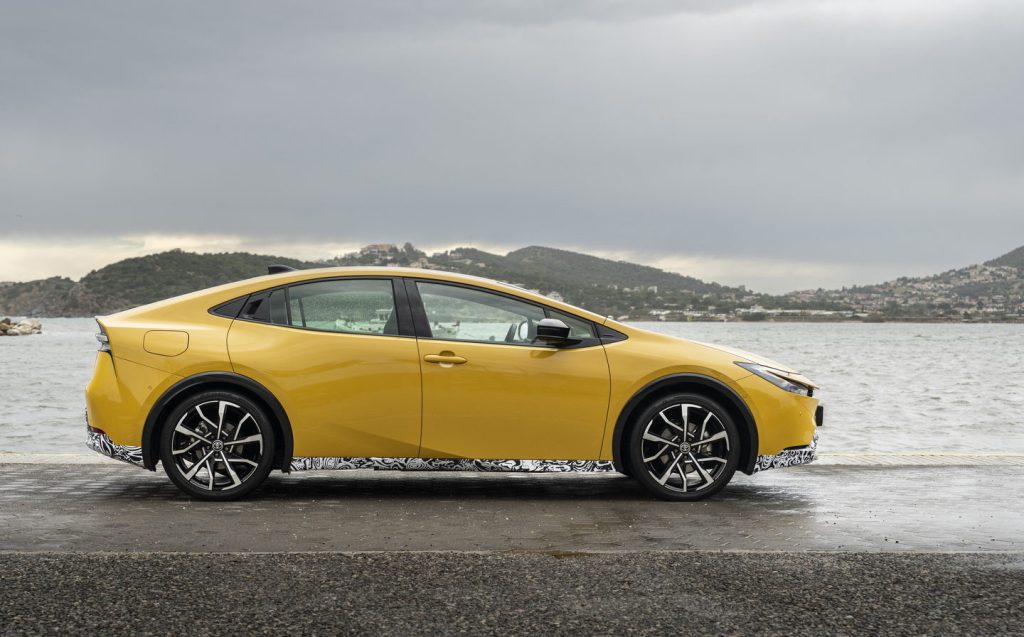
Arguably, none of that matters to British buyers, as this will be the first Prius in 25 years that is not offered for sale here. There’s no simple reason why, but it all starts with the repositioning of the Prius. It’ll only be available as a plug-in hybrid in Europe, so is expected to be more expensive and positioned higher up the automotive food chain.
In the UK, other hybrid Toyotas – such as the C-HR crossover – already comprehensively outsell the Prius and there are more hybrid options in the range than ever before. Toyota UK specifically addresses the popularity of the Prius in the private hire market by suggesting that the Corolla Touring Sports estate makes for a suitable replacement. In short, there’s no place for a new plug-in hybrid Prius in its plans. Should we care?
Exterior design
Though the Prius won’t be seen on British roads, its design language certainly will. It introduces what Toyota refers to as the “hammerhead” front end, encompassing a low nose and distinctive treatment of the bodywork and LED lighting. Expect to see this approach on the next-generation Toyota C-HR and other models from the company soon after.
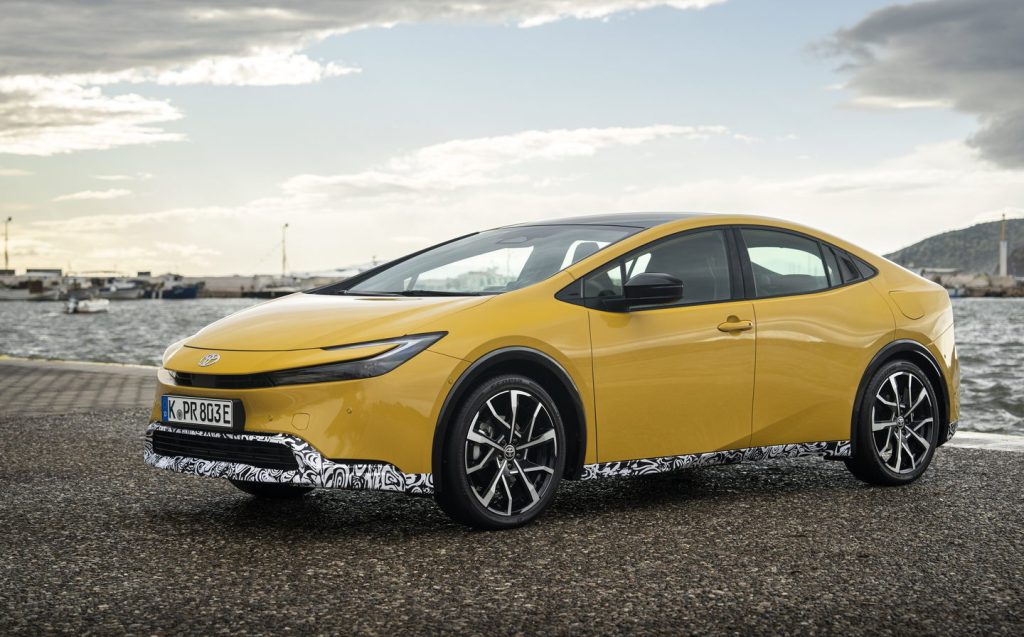
Helping the new Prius attain its newfound attractiveness are changes to its overall dimensions. For instance, it’s a considerable 50mm lower than before, with an extra 22mm in the width. Those changes, along with a 50mm longer wheelbase and a shorter rear overhang, result in a downright sporty profile and stance – augmented by the fitment of 19in alloy wheels for the first time in a Prius.
Despite the allure of the new car’s design, it’s still undeniably a Prius, thanks to the sharply sloping windows front and rear, and the upright tail. Saying that, the rear end is significantly better looking than any of its predecessors’, with a stylish LED light bar and a subtle black lip spoiler.
The Prius name is now emblazoned across the rear as well, and the dark surround of the back lights is carried through the rear window over the top of the car when it’s fitted with the panoramic sunroof. That ties in with the black wheelarch extensions, which sit on quite muscular looking bodywork. The end result is a vehicle that could almost be referred to as a four-door coupé.
Interior and practicality
The negatives first: the low roofline means taller people will have to watch their heads getting into the Prius – front or back. Admittedly, there’s plenty of space once you are inside, as the seat bases are quite low, so four six-foot adults can get comfortable.
The rear seat isn’t all that wide, and there’s a modest transmission tunnel in the floor so it’s best not to squeeze three adults into the back too often. There are Isofix child seat mounting points back there in the outer two positions as expected, however.
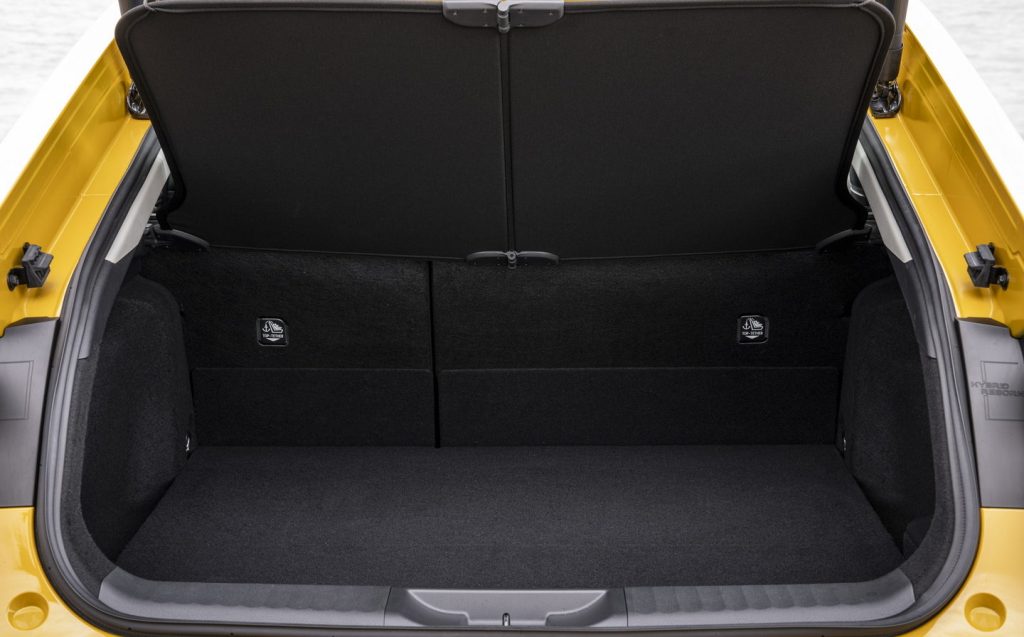
Although the boot of the Prius is larger than that of its predecessor, it’s still small by the standards of most cars in the C-segment (small family cars), holding just 284 litres of luggage. A Volkswagen Golf holds 100 litres more, while even the plug-in hybrid version of the Skoda Octavia swallows 450 litres. At least it’s accessed via an electric tailgate in the Prius, and the rear seats split and fold 60:40, creating a usefully flat surface if you need to carry larger items.
Practicalities aside, the cabin is of very high quality, enhanced by the leather upholstery and high specification of our test vehicle. Every switch and button moves with tactile precision and the layout is eminently sensible, too.
That’s not to say it’s dull, however, as the interior is — colour palette aside — quite an interesting one to look at. There’s an unusual steering wheel for a start, featuring a large central boss that’s festooned with buttons, while the (digital) instrumentation is viewed above the rim of the wheel, near to the windscreen.
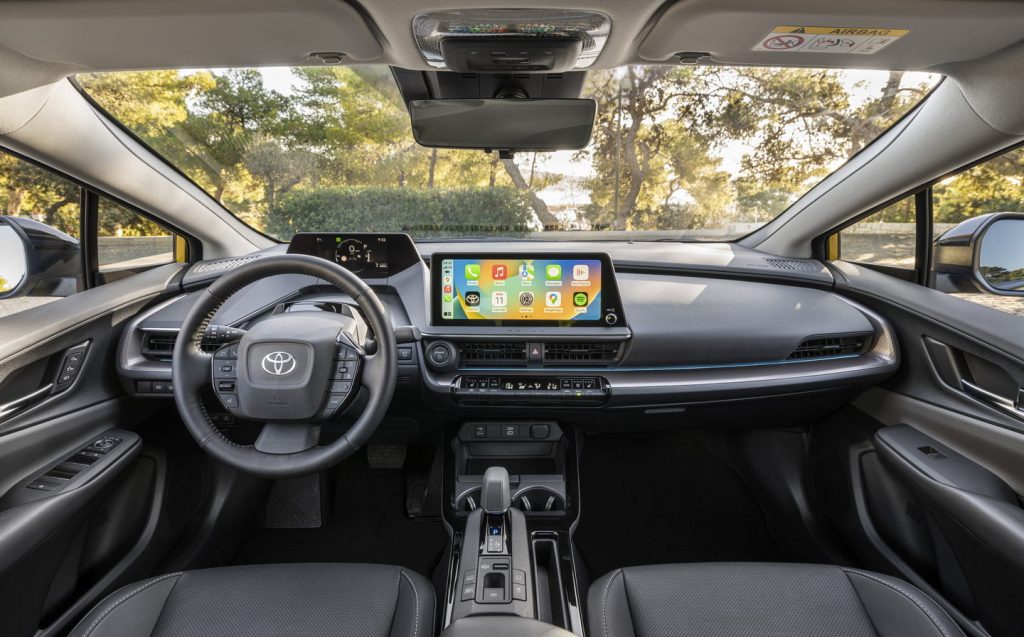
Its graphics are sharp and easy to understand, as are those of the 12.3in touchscreen in the middle of the dashboard. Toyota has finally caught up with everyone else in that regard. However, it has pleasingly retained physical switchgear for the heating and ventilation while other brands are adamant these controls should be housed within the infotainment system.
There are several different storage options in the centre console, including two covered sections, integrated with a high-set, stubby drive lever and various buttons for the driving settings. It’s all very logically laid out and easy to get familiar with.
Technology and safety
One of the most interesting pieces of technology fitted to the new Prius is a solar roof option that actively charges up the drive battery while the car is sitting still. Toyota claims that it can generate five miles of EV driving range each day — depending on conditions — and so could completely recharge the battery over the course of a week or two.
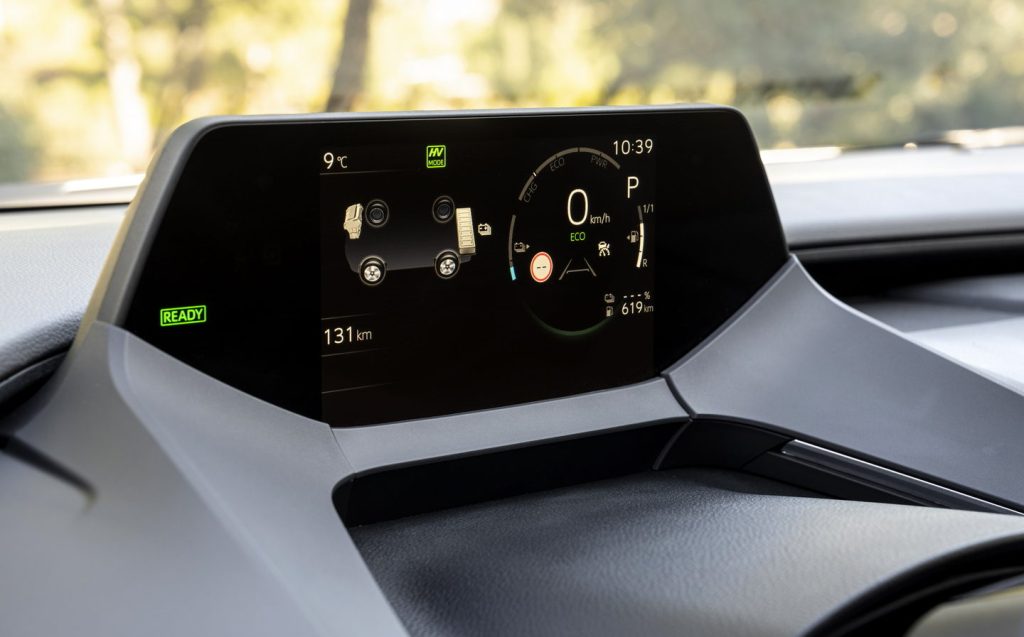
In terms of safety, the Japanese firm’s impressive Toyota Safety Sense suite of features has been extended further for the Prius, including a much-improved front camera sensor that is said to have double the forward detection distance of its predecessor.
Front side radar sensors are also included to support the Pre-Collision System, Lane Trace Assist and Front Cross Traffic Alert features. Other natty sounding functions include Intersection Collision Avoidance Support and Obstacle Anticipation Assist.
Performance, range and charging times
Toyota has quietly reengineered its well-proven hybrid system of late, but the core principle isn’t all that different from that of the original Prius of 1997, albeit now with a much bigger battery that can be charged from an external source.
Under the bonnet is a four-cylinder petrol engine of 2-litre capacity, optimised for efficiency rather than performance. It’s a naturally aspirated unit (no turbo) that can produce up to 150bhp and 140lb ft of torque.
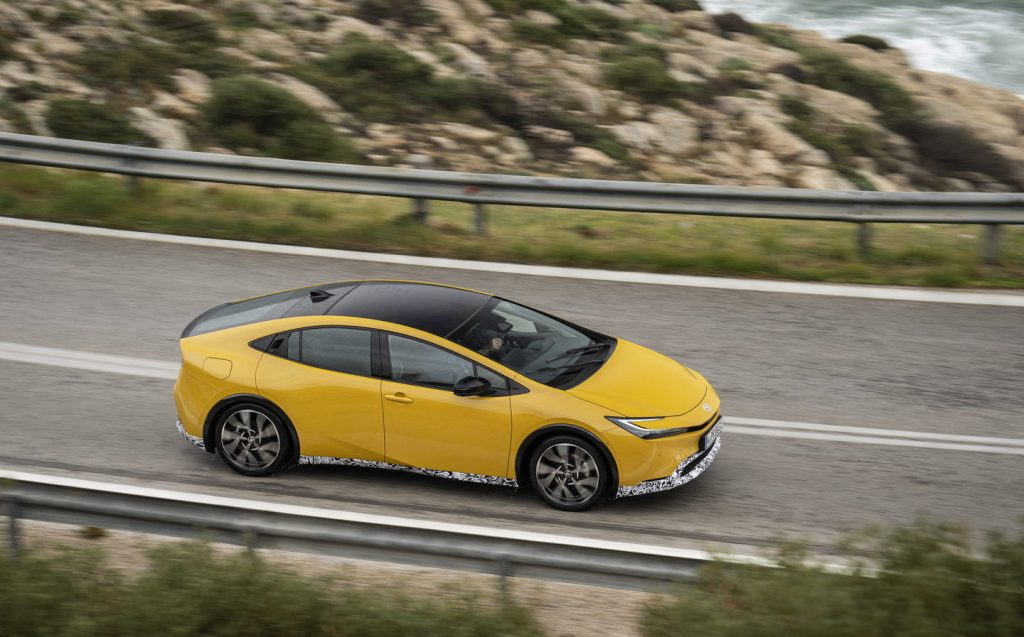
The electric part of the equation is a permanent magnet synchronous motor that can put out up to 160bhp and 153lb ft of torque. Toyota employs a complicated power-splitting setup to allow any combination of the engine and motor — all going through an electronically-controlled “continuously variable transmission” (gearless automatic) to the front wheels. Overall peak power is quoted as 220bhp, and the 0-62mph time is a respectable 6.8 seconds.
Alas, to replicate that sort of acceleration, the transmission holds the engine at high revs. Its maximum power is produced at 6,000rpm, after all, a figure that drivers of modern turbocharged cars will rarely see. In the Prius, that’s very noisy.
Thankfully, if you’re not pressing the accelerator all the way down, the engine is notably quiet and isolated from the cabin. Indeed, it is switched off a lot of the time, as indicated by the little “EV” symbol in the instruments. This happens impressively regularly in Toyota’s non-plug-in hybrids, and it’s enhanced further in the Prius Plug-in.
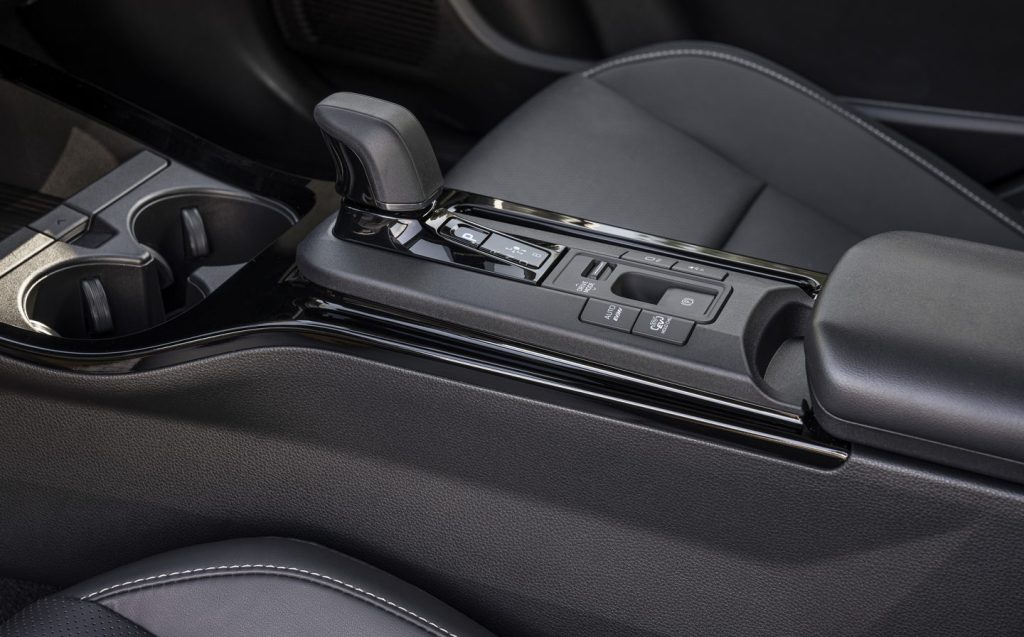
That’s thanks to the use of a 13.6kWh lithium-ion battery pack. Though final homologation of the car is incomplete, it’s expected that it will officially manage over 40 miles on electric power in some specifications. The driver can choose to run only on the battery if there is sufficient charge, and it’s possible to force the engine to actively charge up the battery, too.
In our test drive, on dry and relatively warm roads, but a little hilly in places, the Prius managed over 35 miles before the engine was required. The on-board AC charger is rated to 3.5kW, which means a battery recharge from flat to full in about four hours from a suitable charger.
Drivers can alter how much brake energy regeneration there is on the move. The simplest way to do that is to choose between normal D for Drive or B for maximum regeneration from the drive lever, though there’s the option to set one of three levels within a sub-menu of the digital instruments, too. None of the levels is quite “one-pedal” driving as found in many electric cars.
Ride and handling
Not a lot of people realise that the previous-generation Prius was, powertrain aside, good to drive. Toyota has built on that by enhancing the underpinnings in a bid to increase its stiffness while reducing weight. That, along with the wider track and longer wheelbase, has resulted in a car that is smoother and more composed than ever, while allowing Toyota’s engineers imbue the chassis with a little fun.
It’s not luxury-car soft in its dealings with surface imperfections by any stretch of the imagination, but the suspension handles bumps and poor roads well, keeping the car on track and ultimately feeling stable and safe.
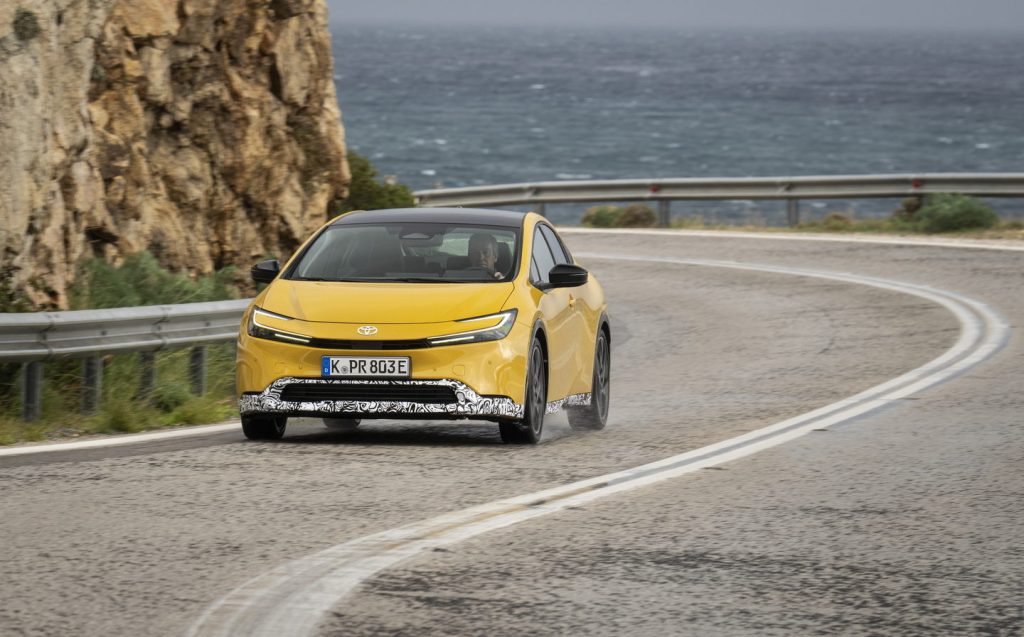
Seek out a twisty road, however, and it becomes clear that the Prius is also quite competent. There’s very little body roll, the steering is pleasantly sharp without ever feeling twitchy and the car is easy to place on the road.
The brake pedal feels quite natural to use, despite balancing regenerative and friction braking, and the Prius is relatively agile and dependable through a sequence of interesting corners.
Back on the motorway, pushing the front and rear axles apart has paid dividends in terms of comfort, while double-glazed side glass helps enhance the sense of refinement. It feels like a bigger car on the road than it is in this situation — in a good way — and visibility in all directions is surprisingly clear given the slope of the windows.
Pricing and on-sale date
Naturally, as the new Prius is not set to go on sale in the UK, there are no prices in pounds sterling. Prices in Euros to follow.
Verdict: Toyota Prius Plug-in Hybrid review
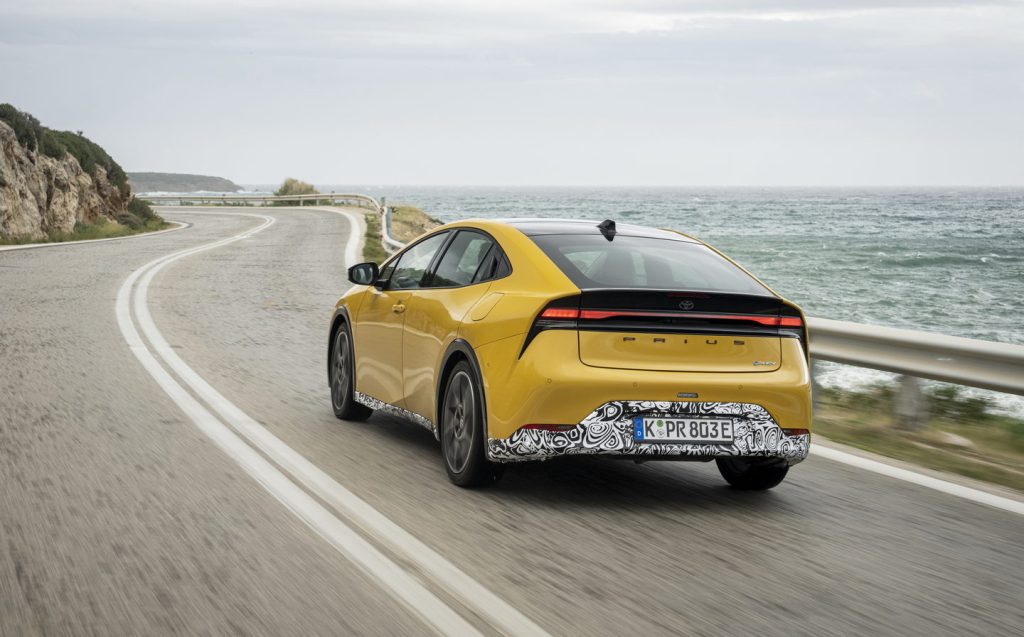
Given the dramatic improvement in the image and desirability of the Toyota Prius, it may seem an odd decision to deny British buyers the option of the car. However, sales data reveals that more buyers in the same price sphere are opting for SUV-like vehicles.
The good news is that the next generation C-HR will be available with the same plug-in hybrid powertrain as the Prius, and it will even share some of its design details. Small consolation I’m sure for those that rather like the look of the Prius.
Related articles
- After reading our review of the Toyota Prius, you might be interested to read our review of the Toyota Corolla
- Keen to go electric instead? Here are the top 10 longest-range electric cars
- Read how Jeremy Clarkson got on with the Honda Civic hybrid
Latest articles
- Porsche 911 Carrera S 2025 review: Harder, better and faster – but is it the best 911?
- F1 2025 calendar and race reports: The new Formula One season as it happens
- Seven great automotive events to visit this summer, from F1 to art and champagne
- Watch new Porsche 911 GT3 smash Nürburgring record for manual cars
- Skoda Elroq 2025 review: Czech carmaker can’t seem to miss with its electric family cars
- Five best electric cars to buy in 2025
- Should I buy a diesel car in 2025?
- Zeekr 7X AWD 2025 review: A fast, spacious and high tech premium SUV — but someone call the chassis chief
- Denza Z9GT 2025 review: Flawed but sleek 1,062bhp shooting brake from BYD’s luxury arm


